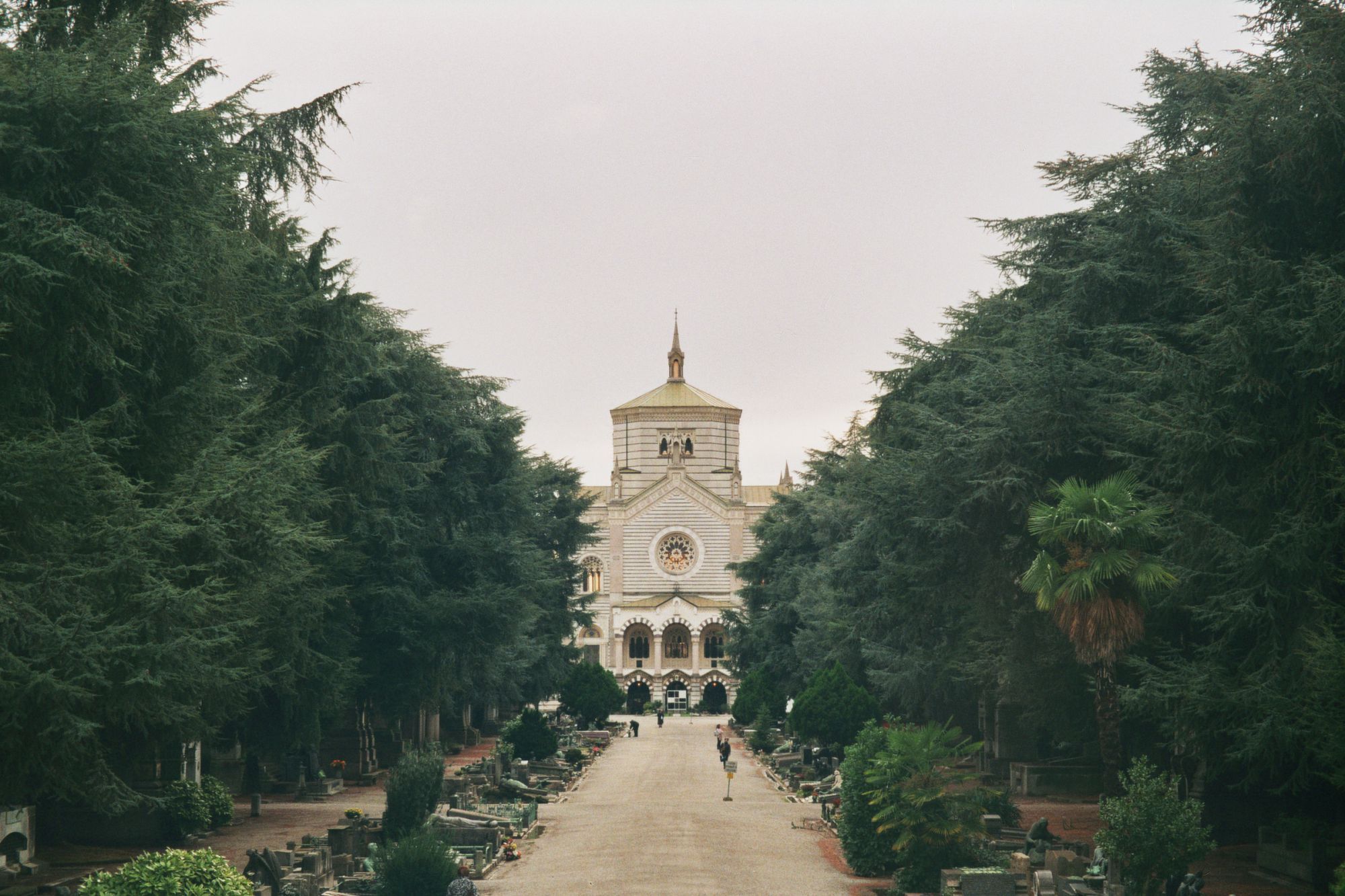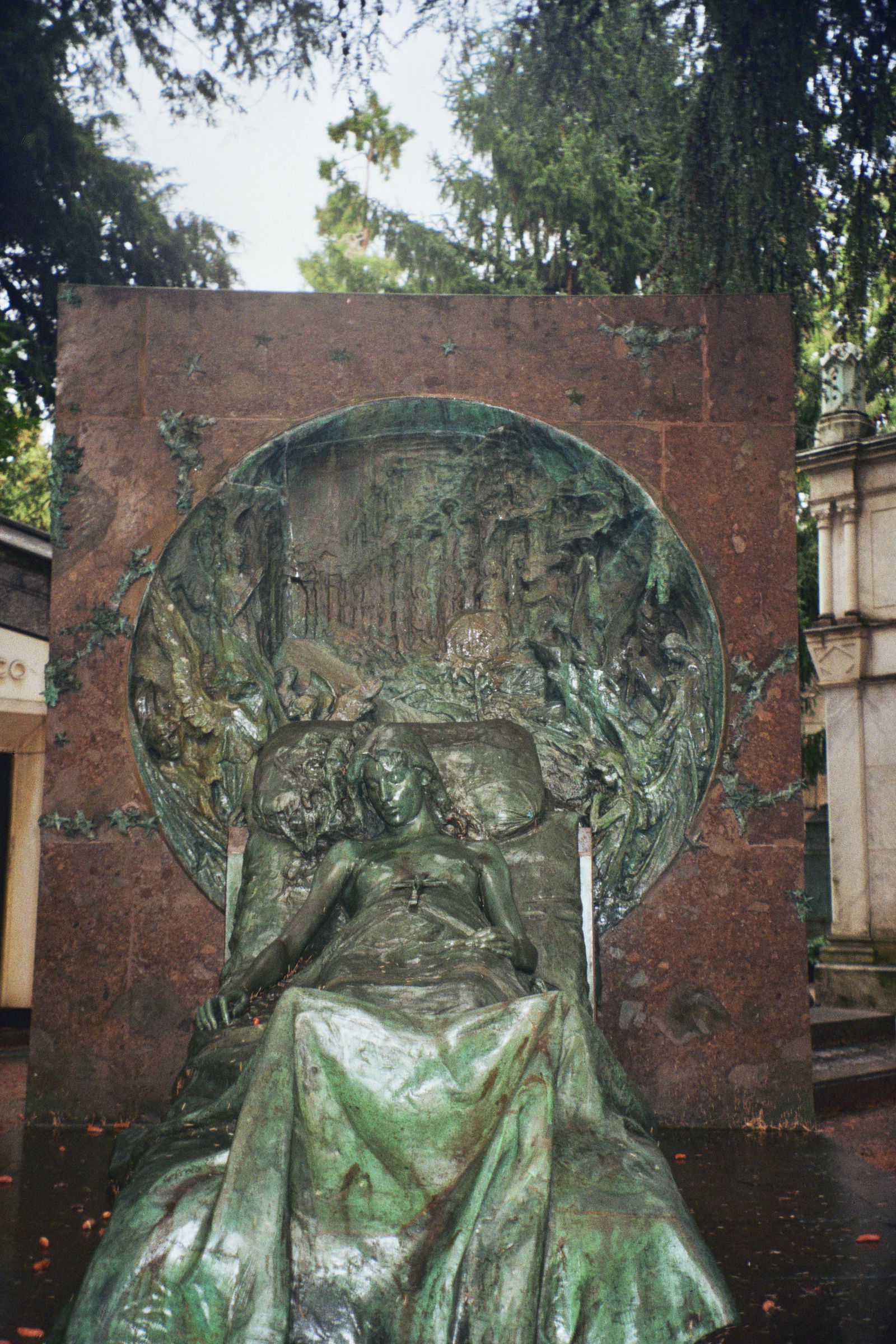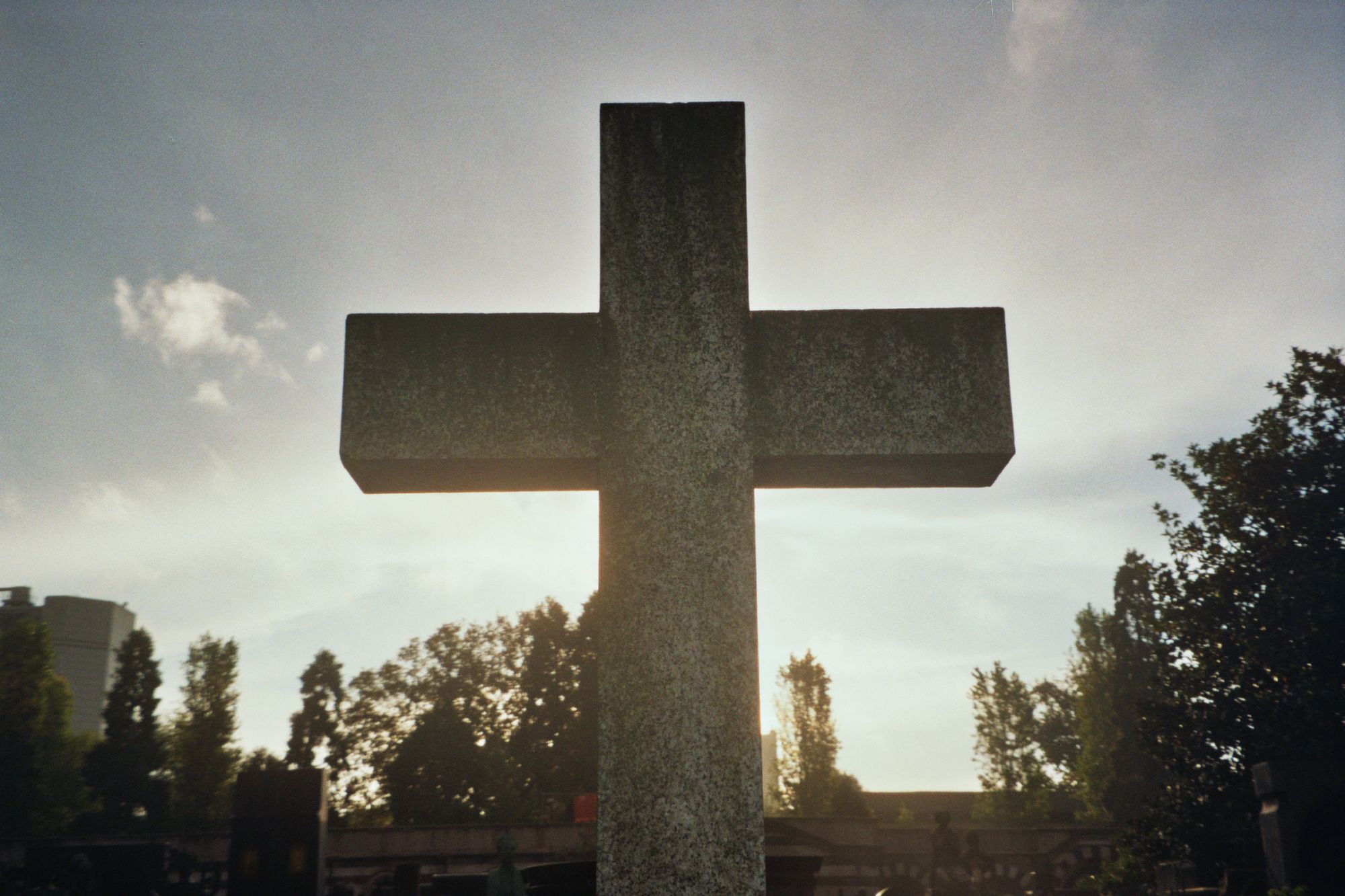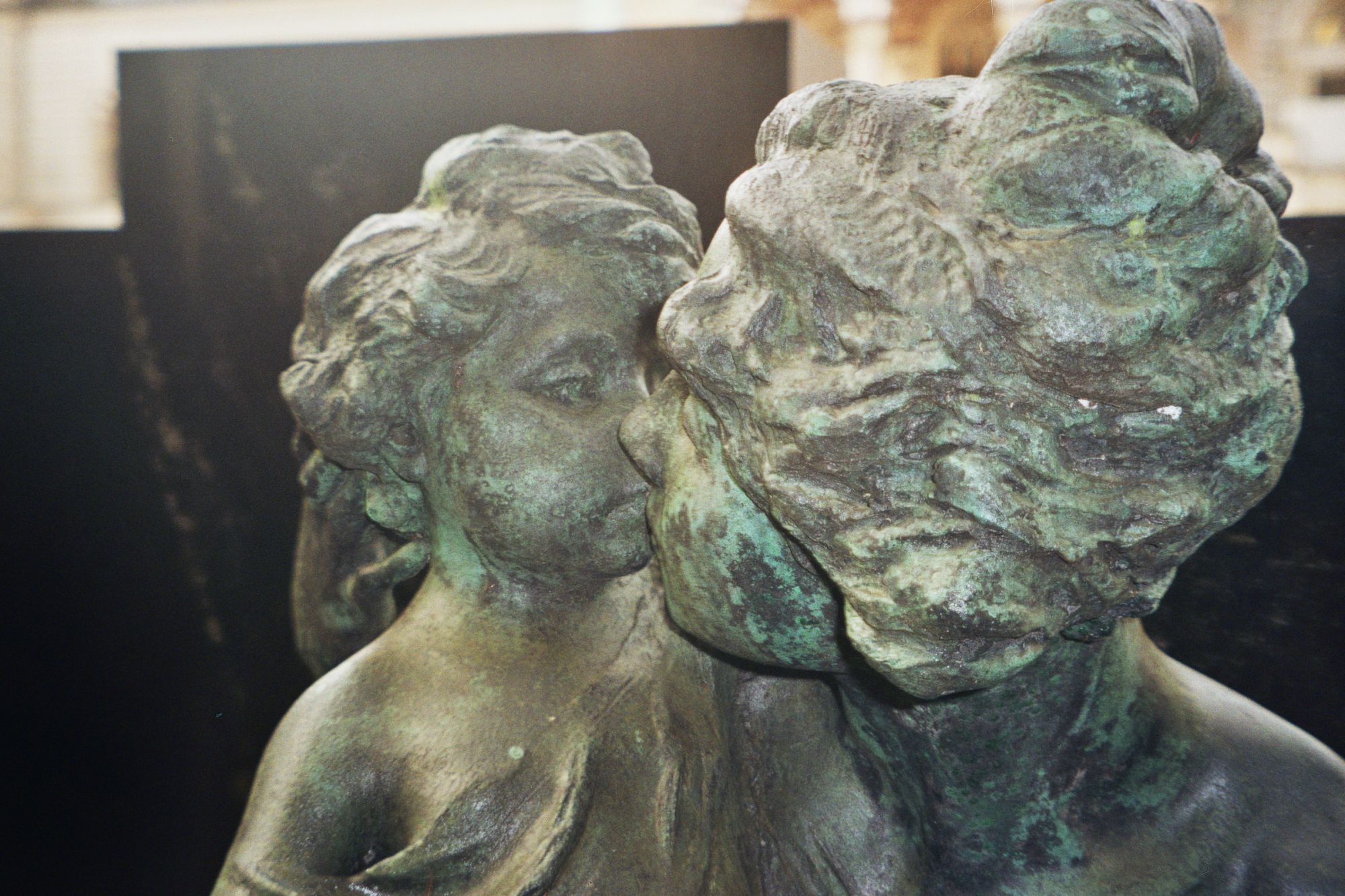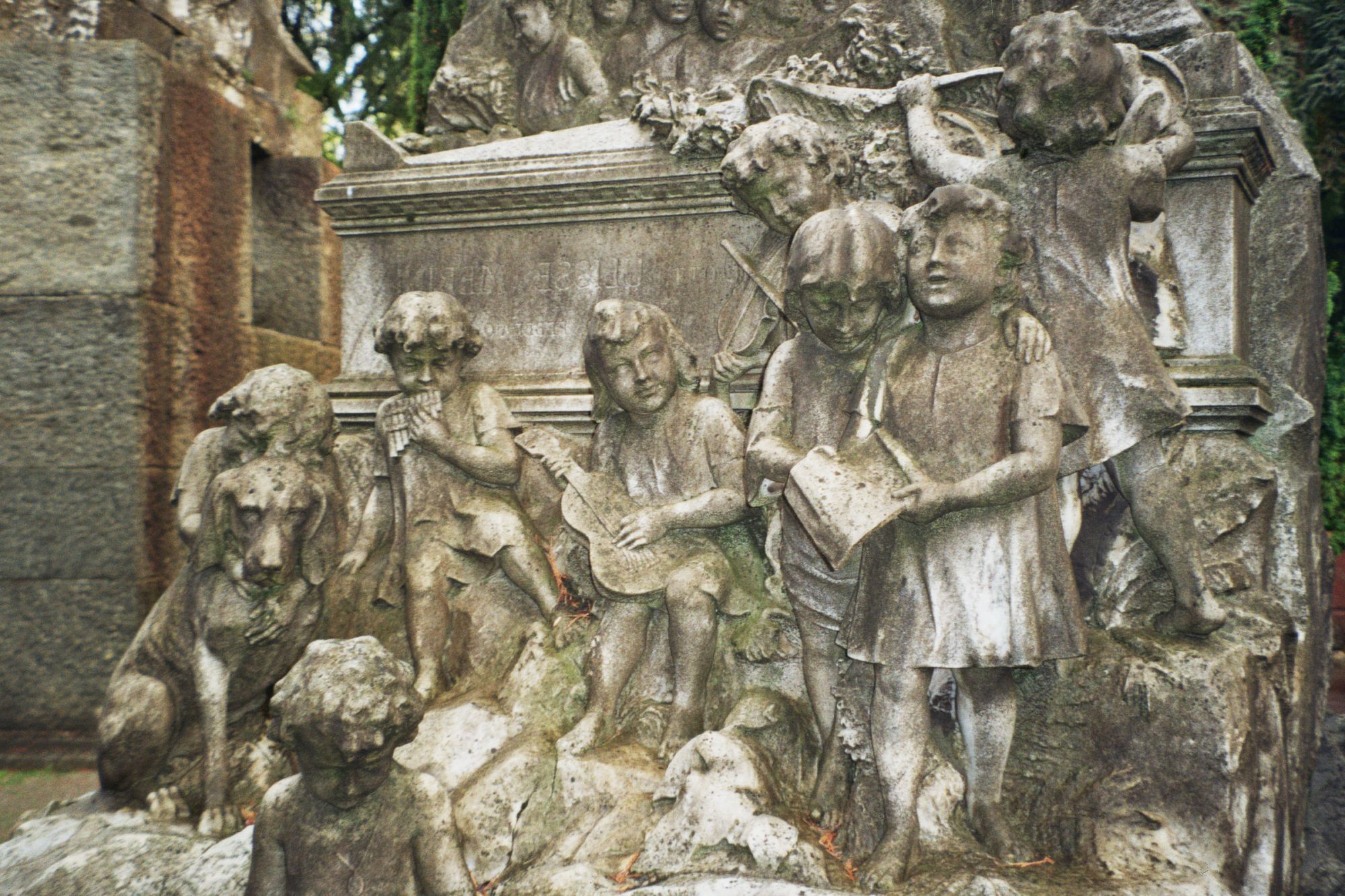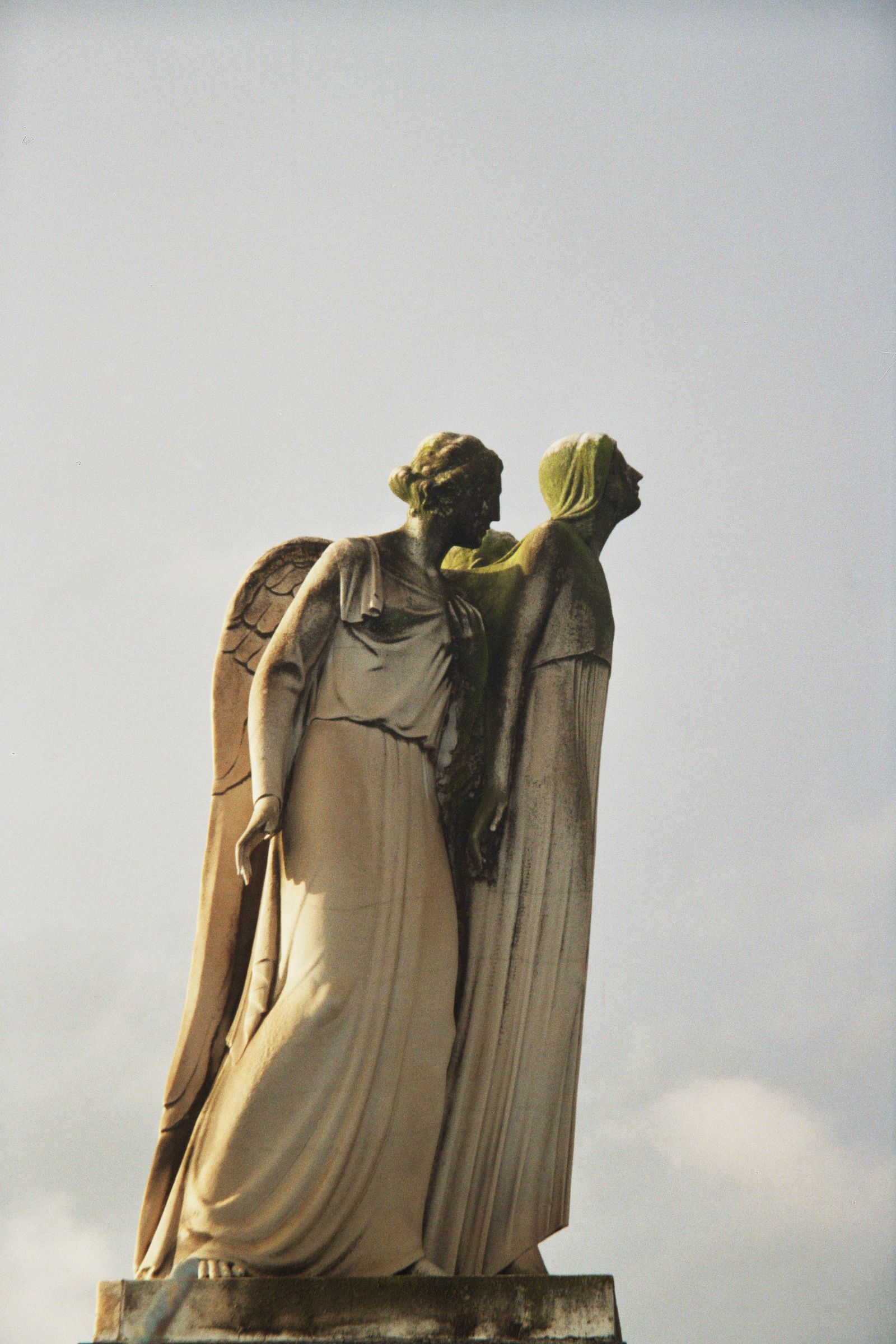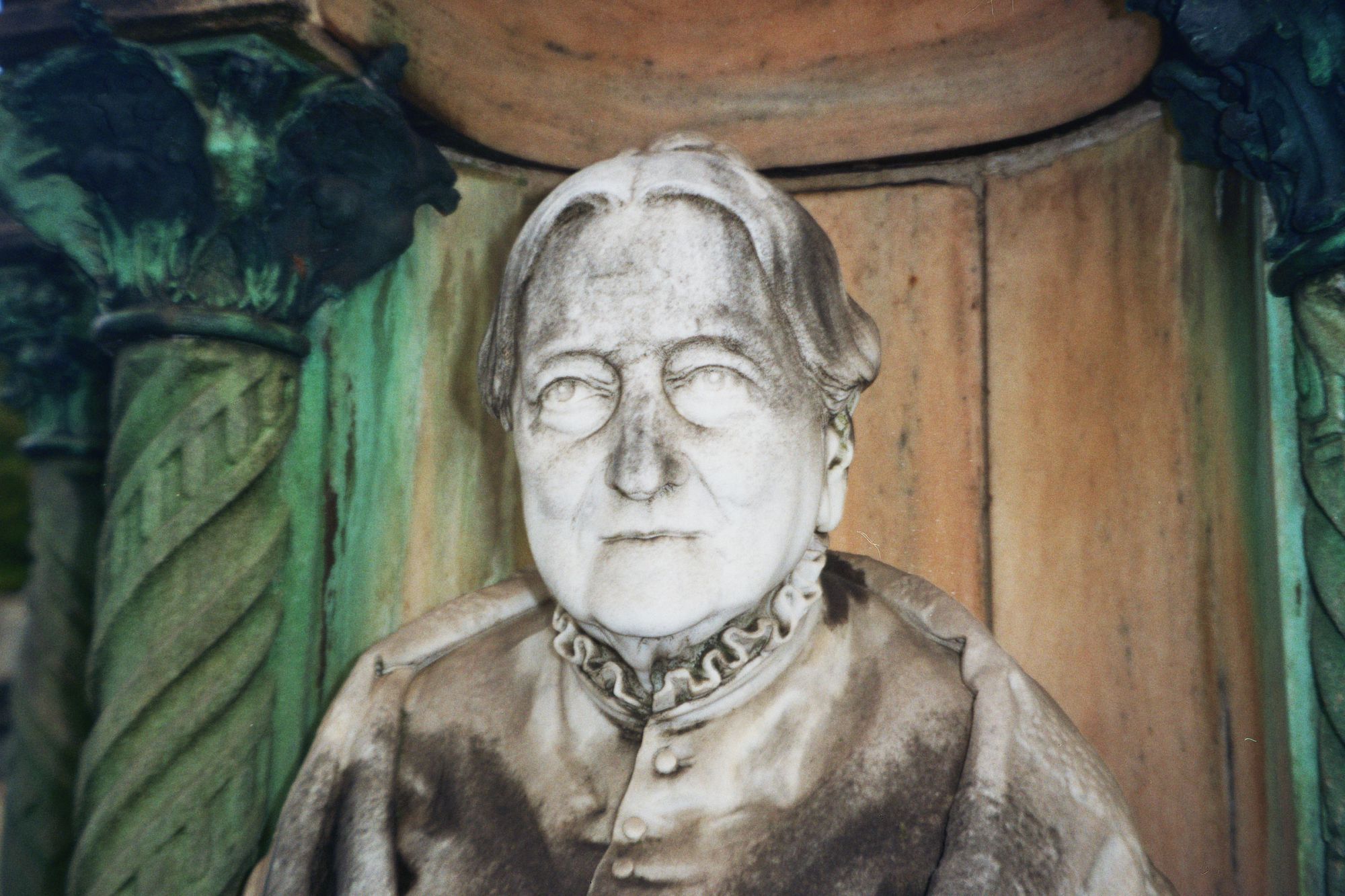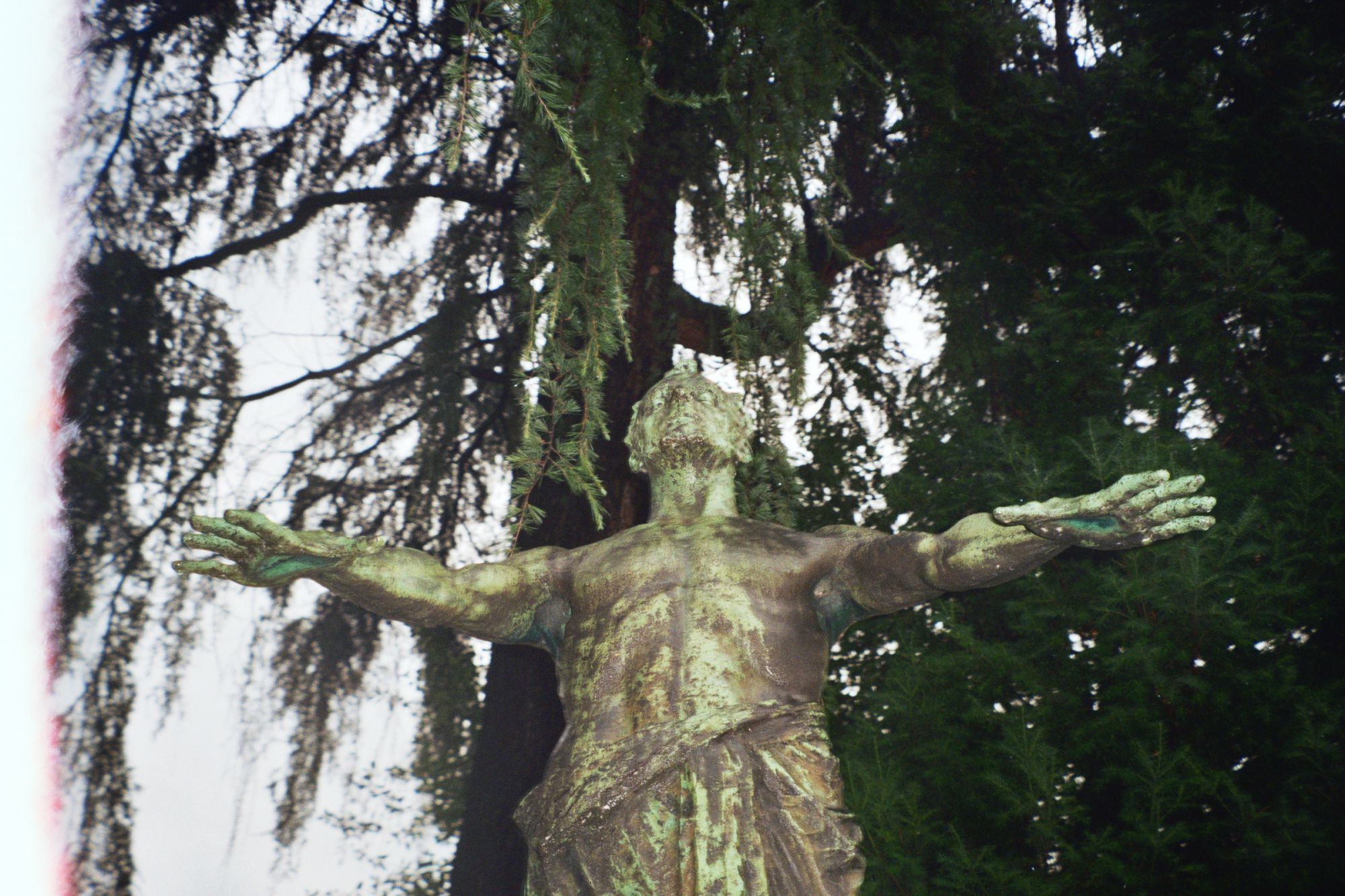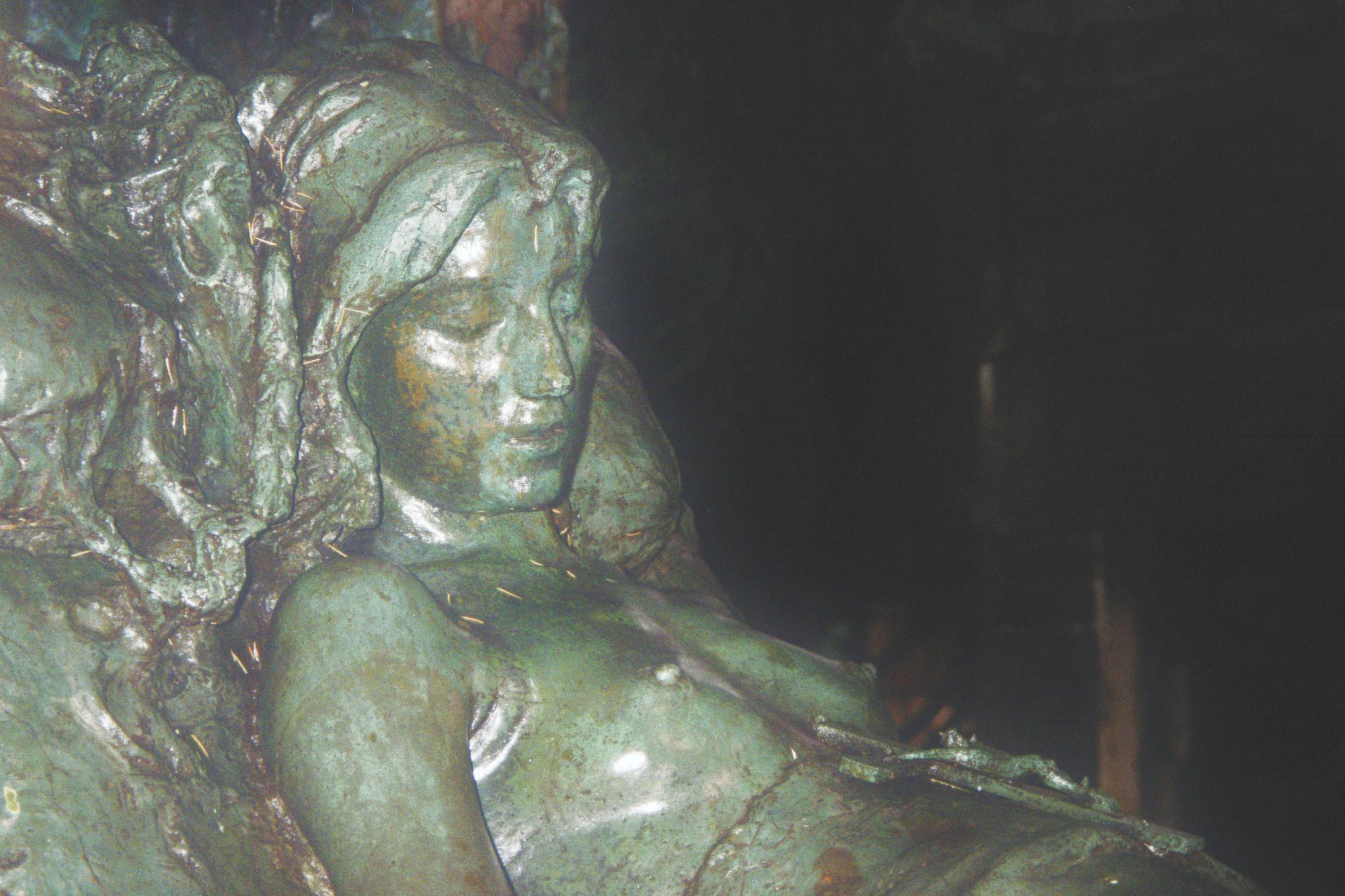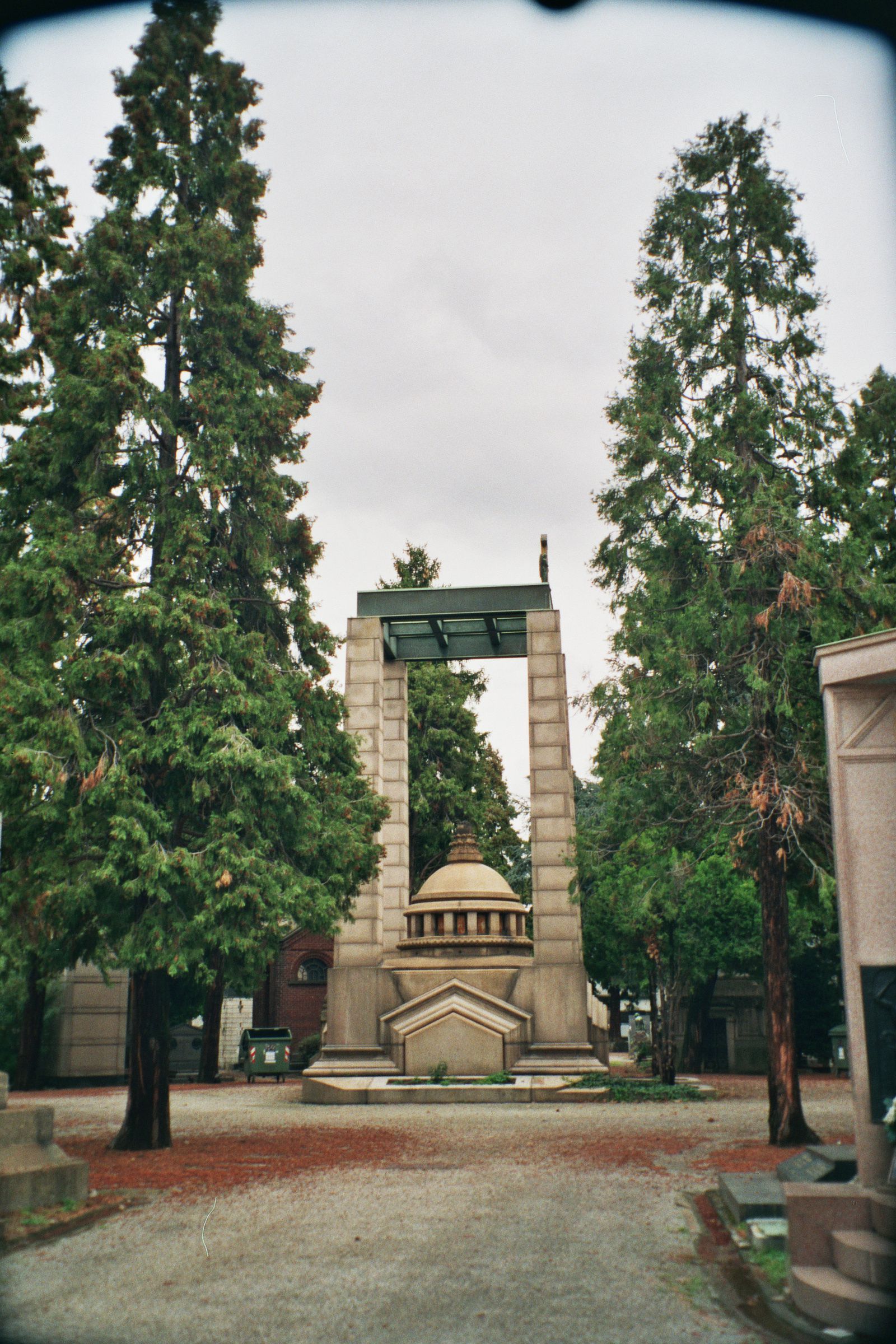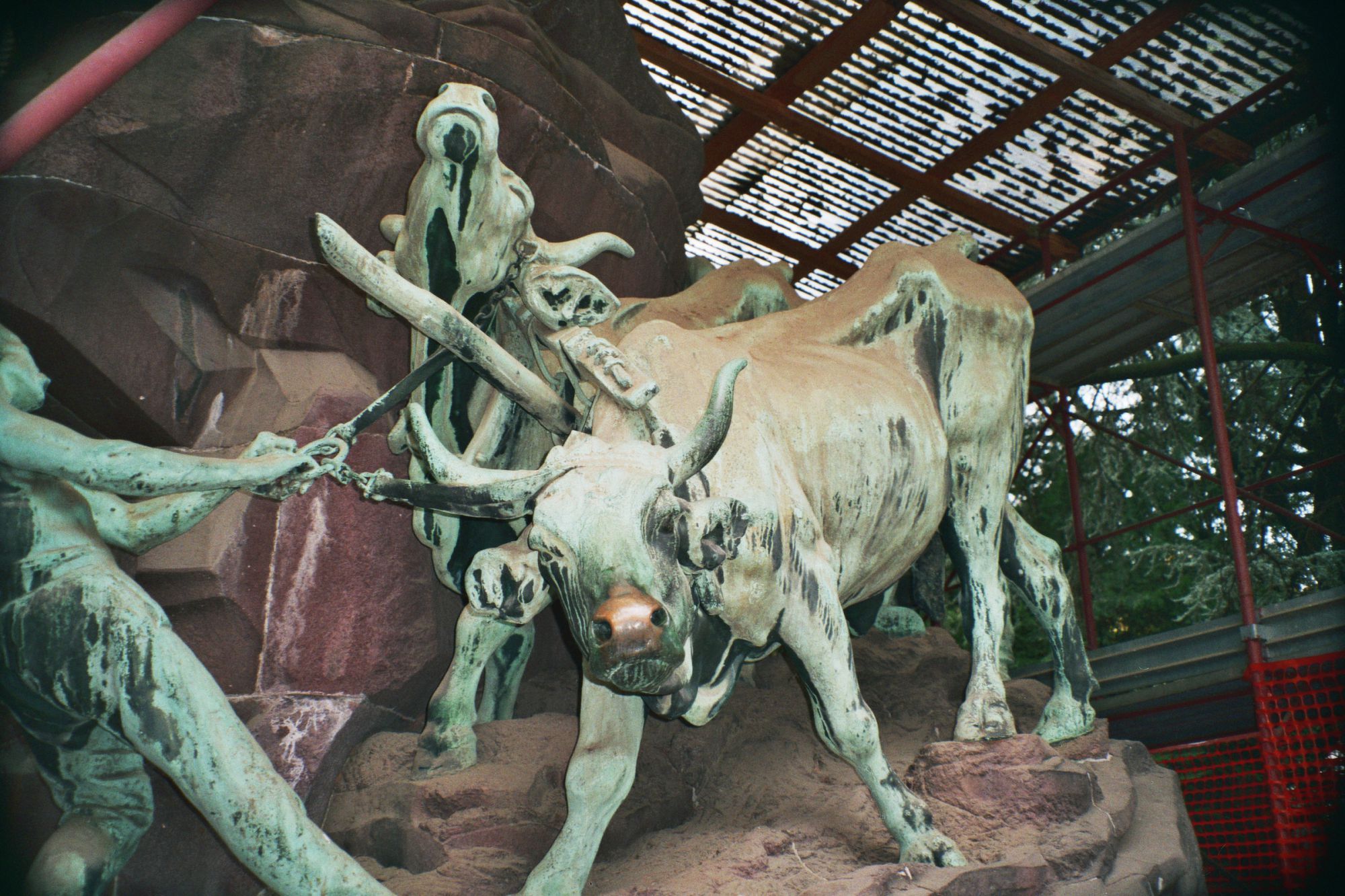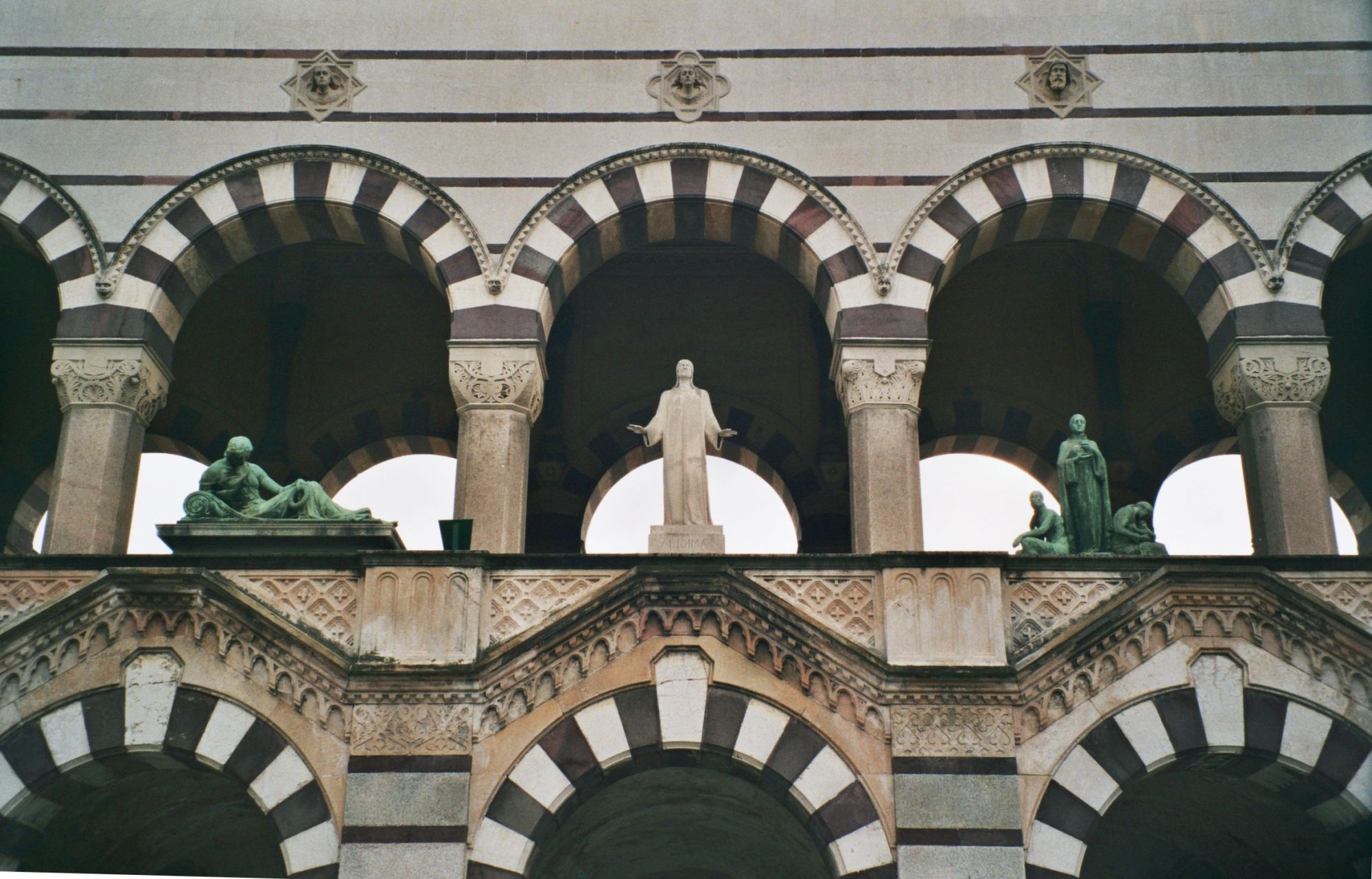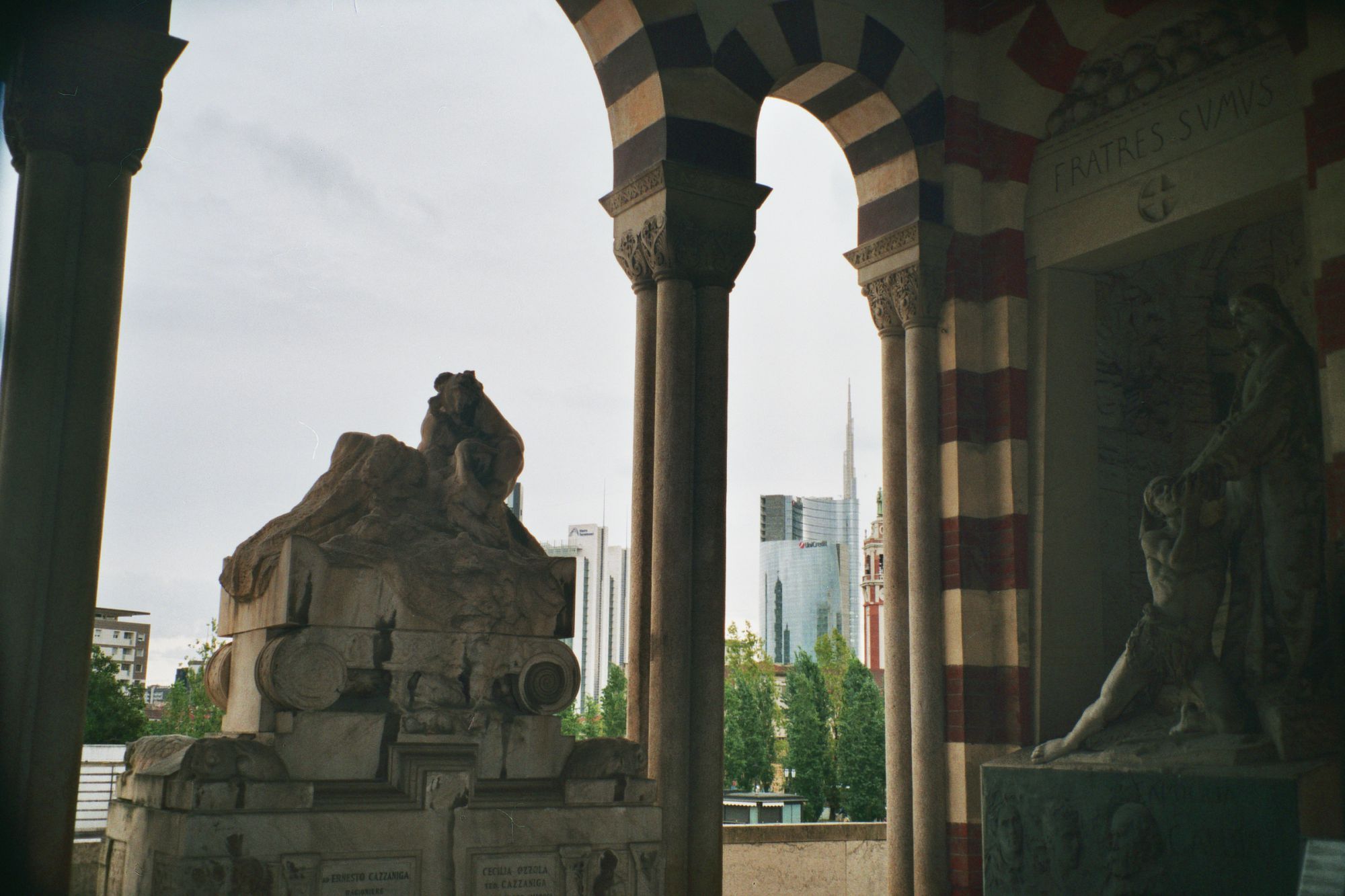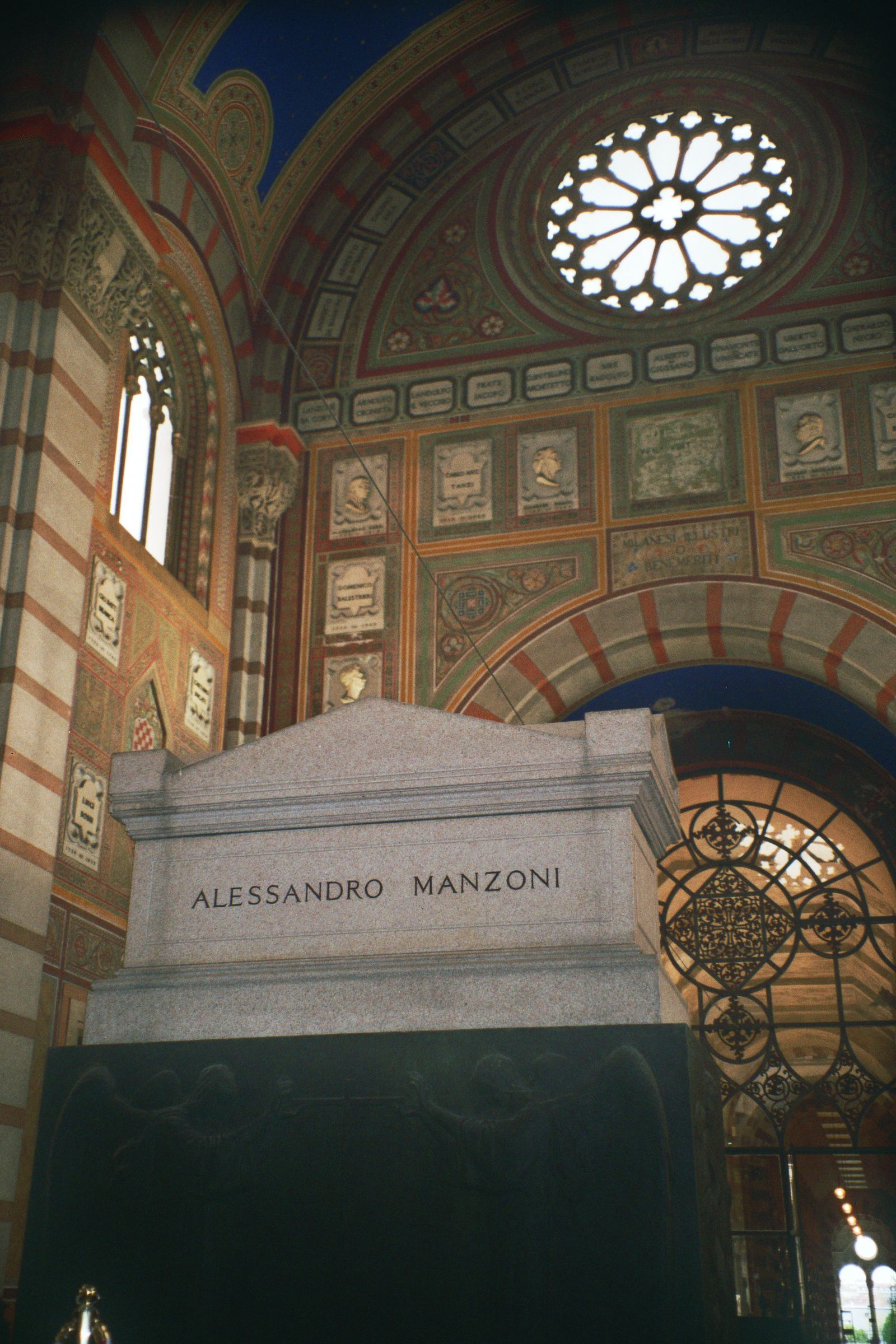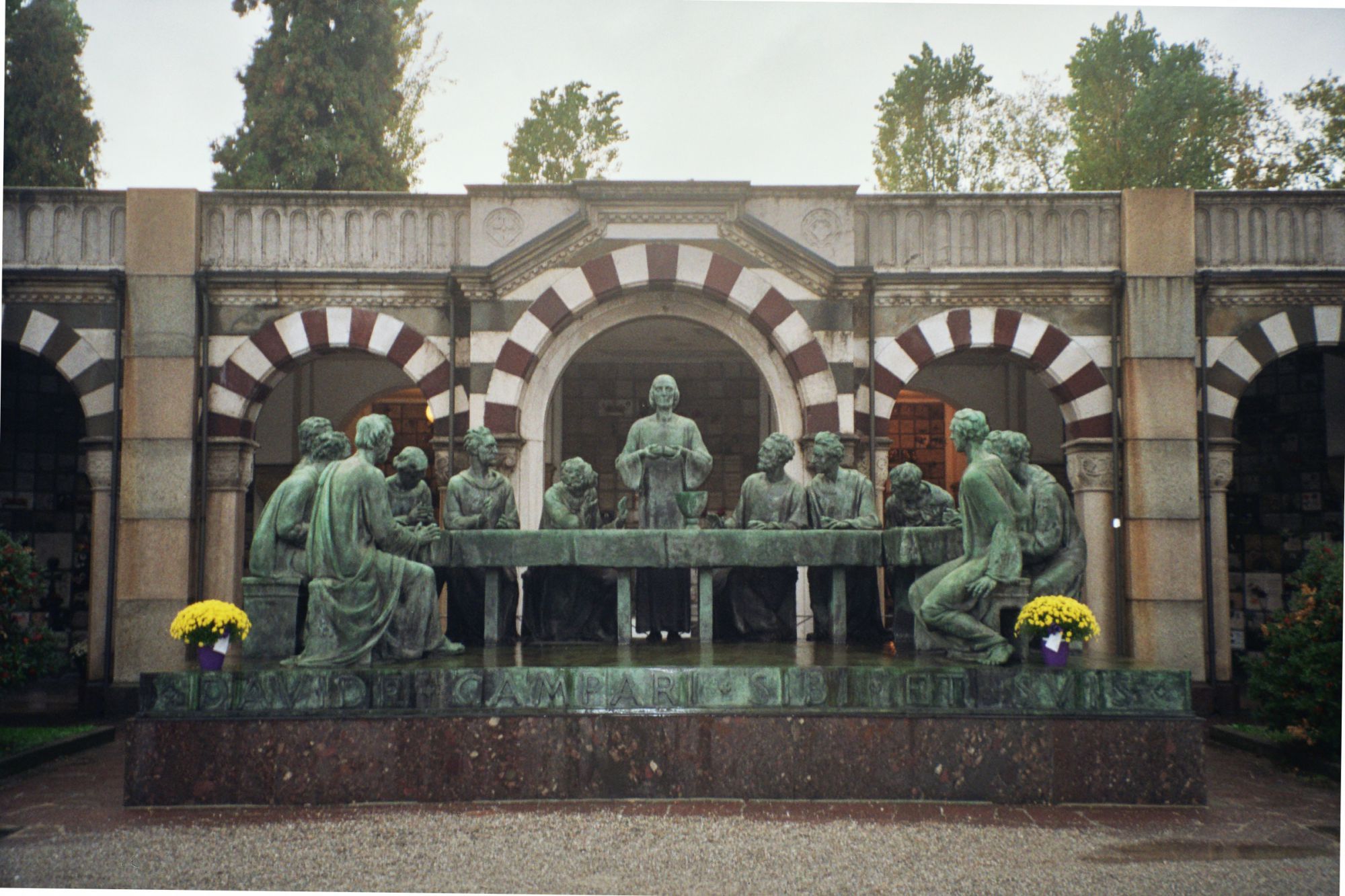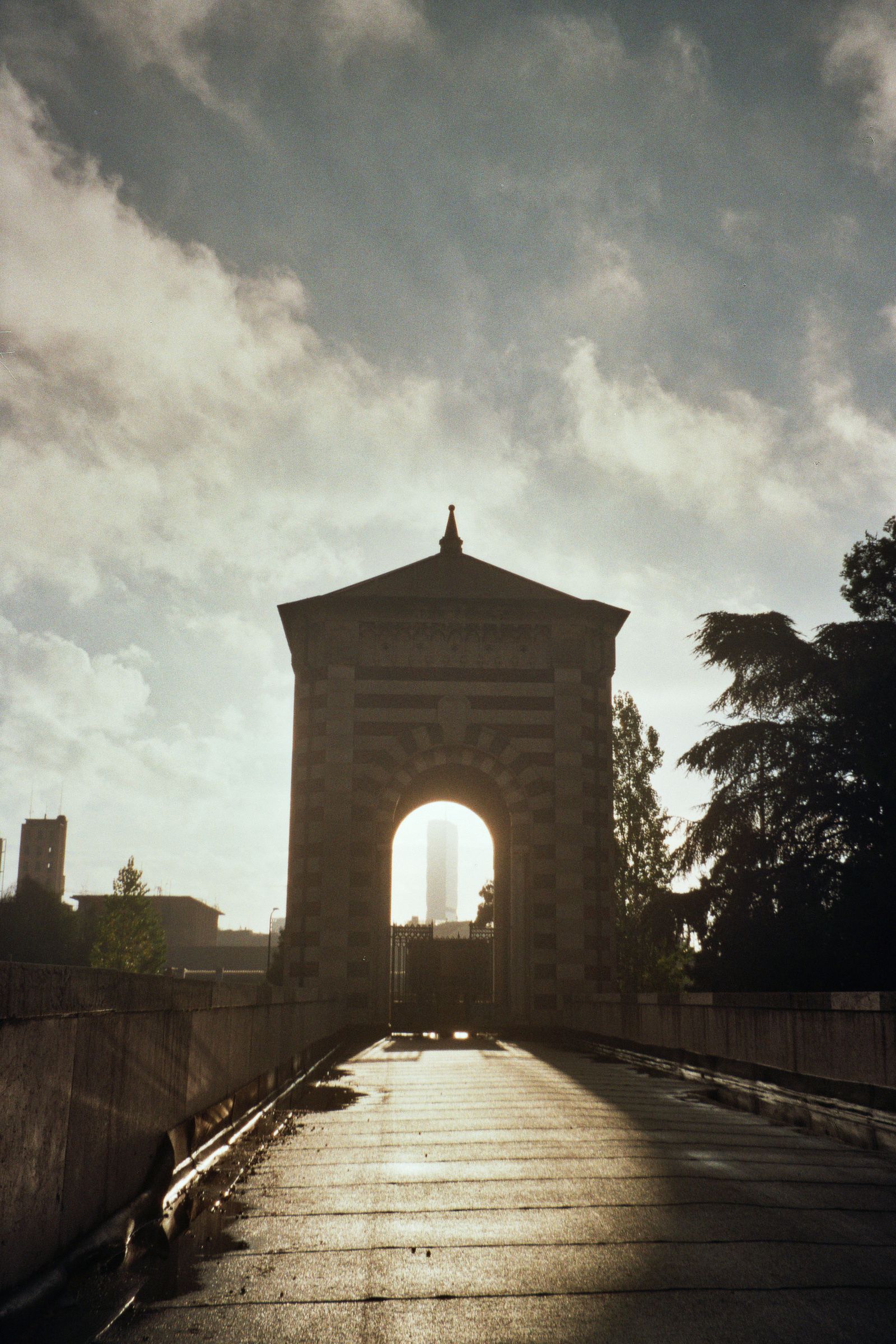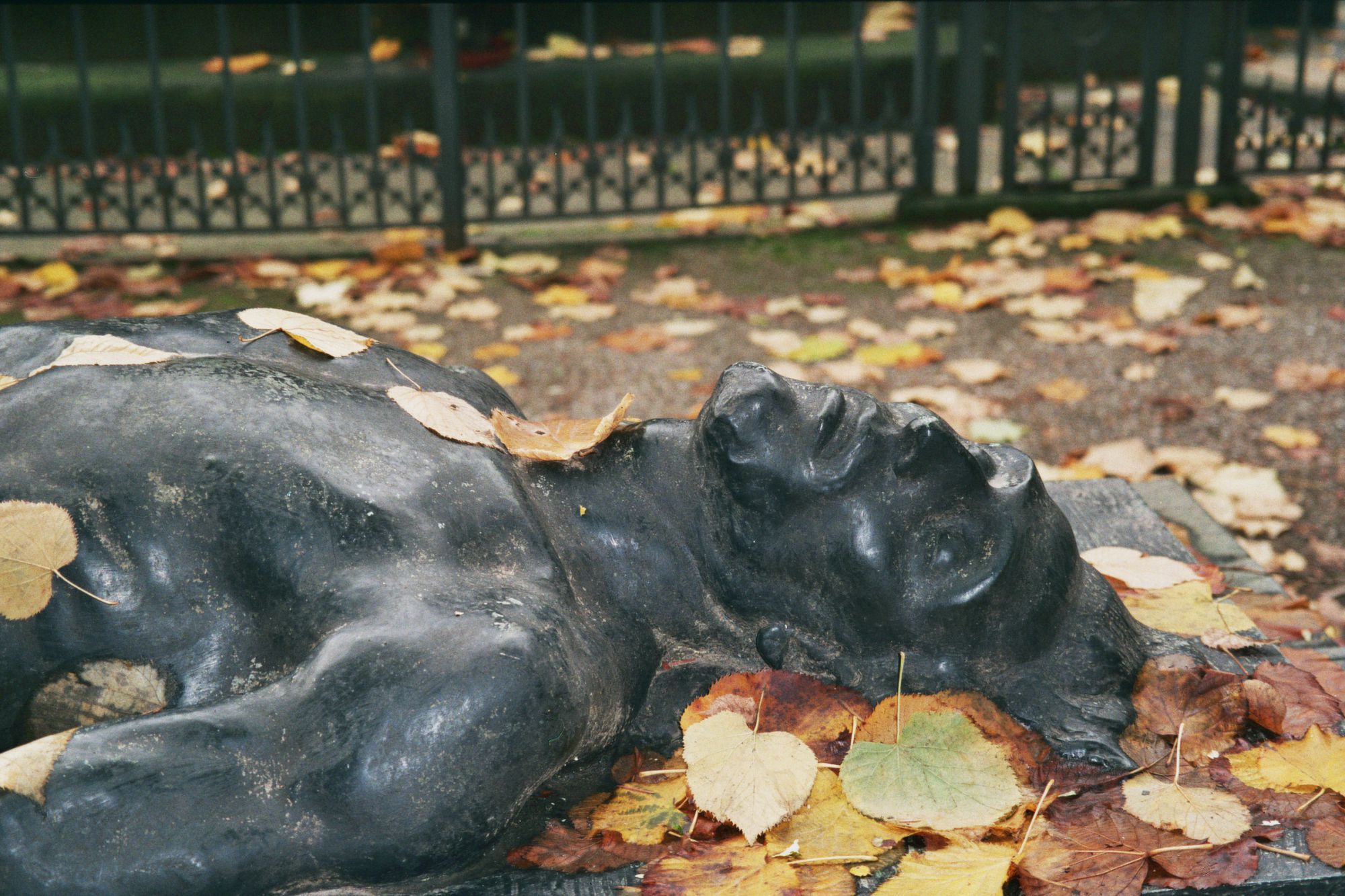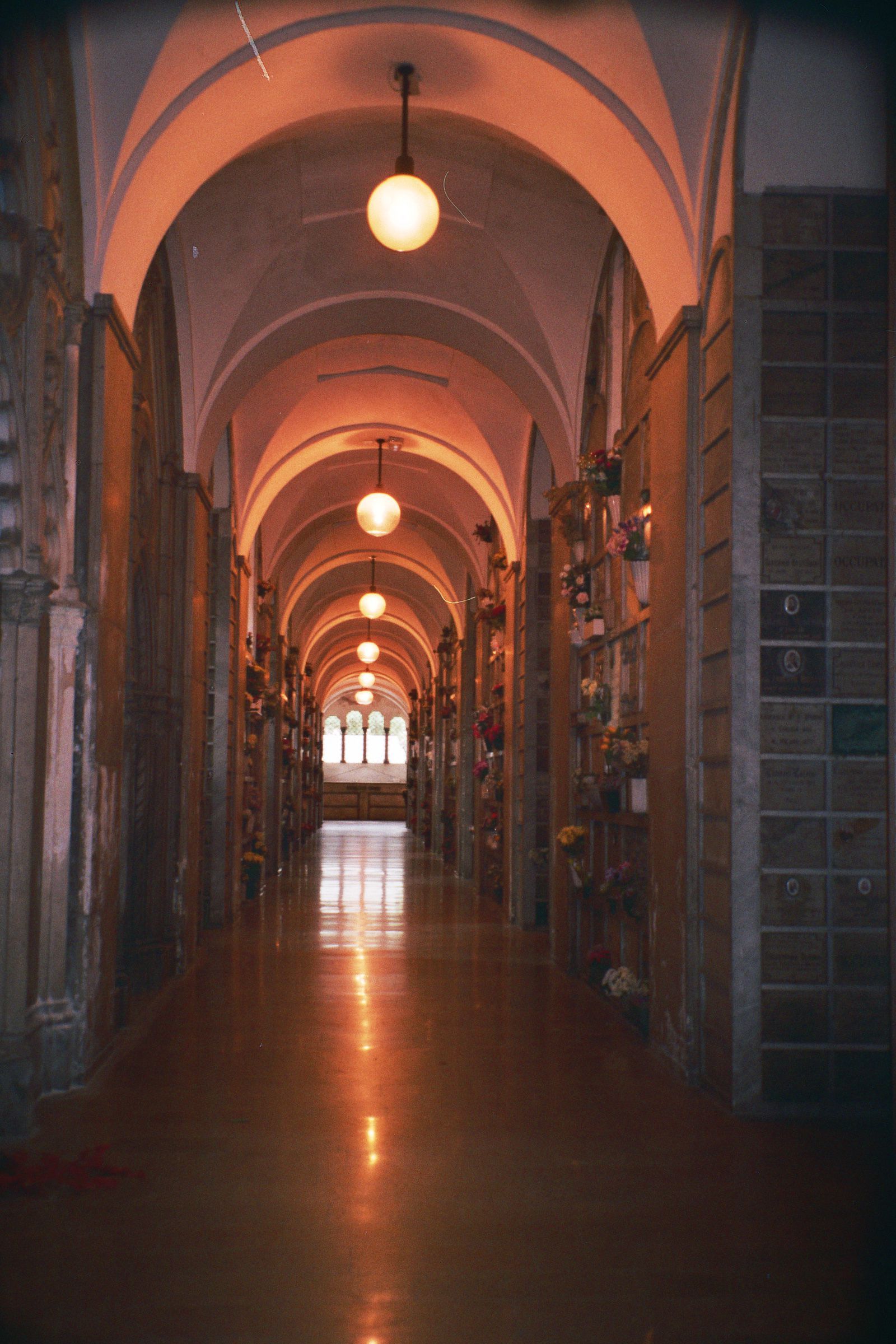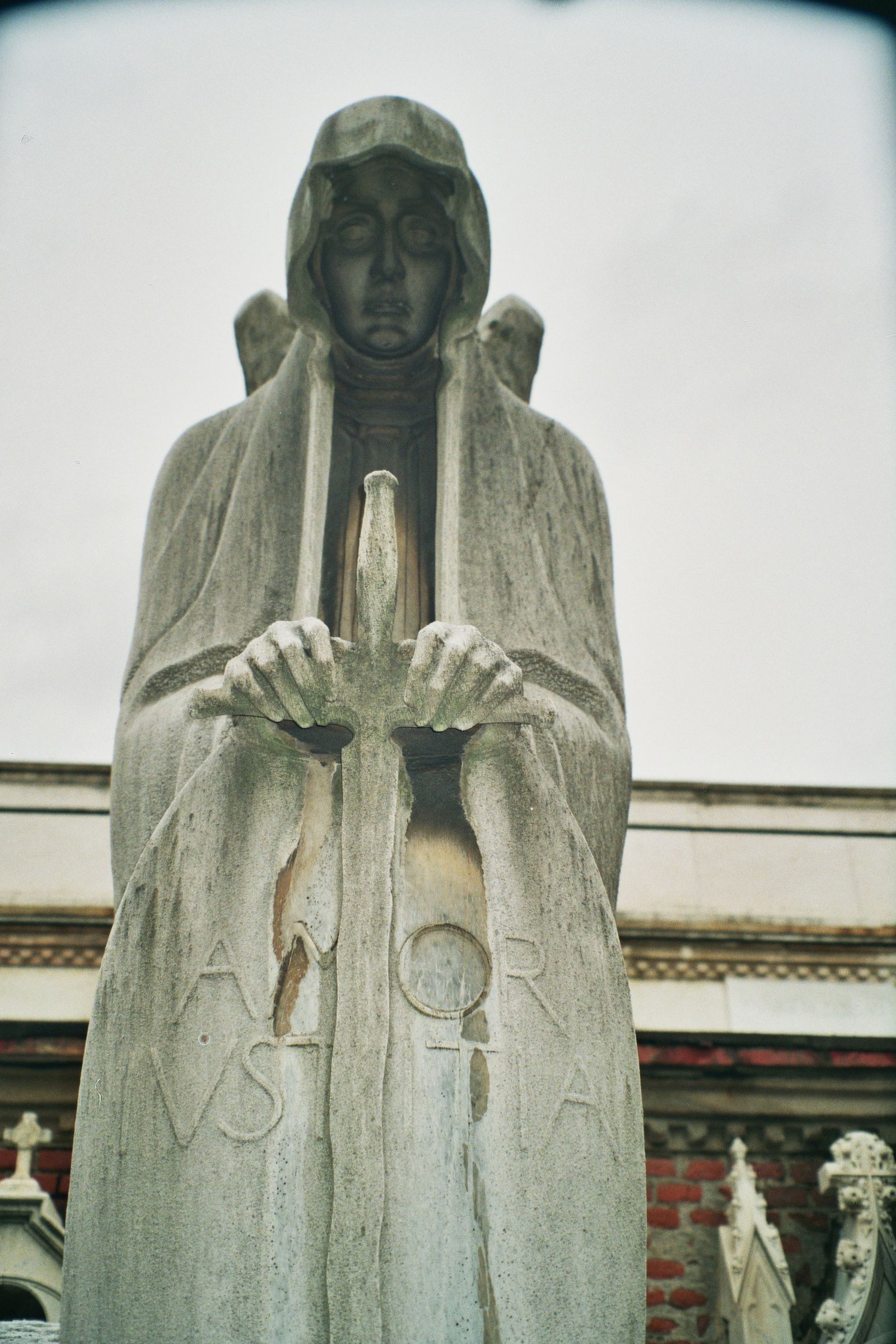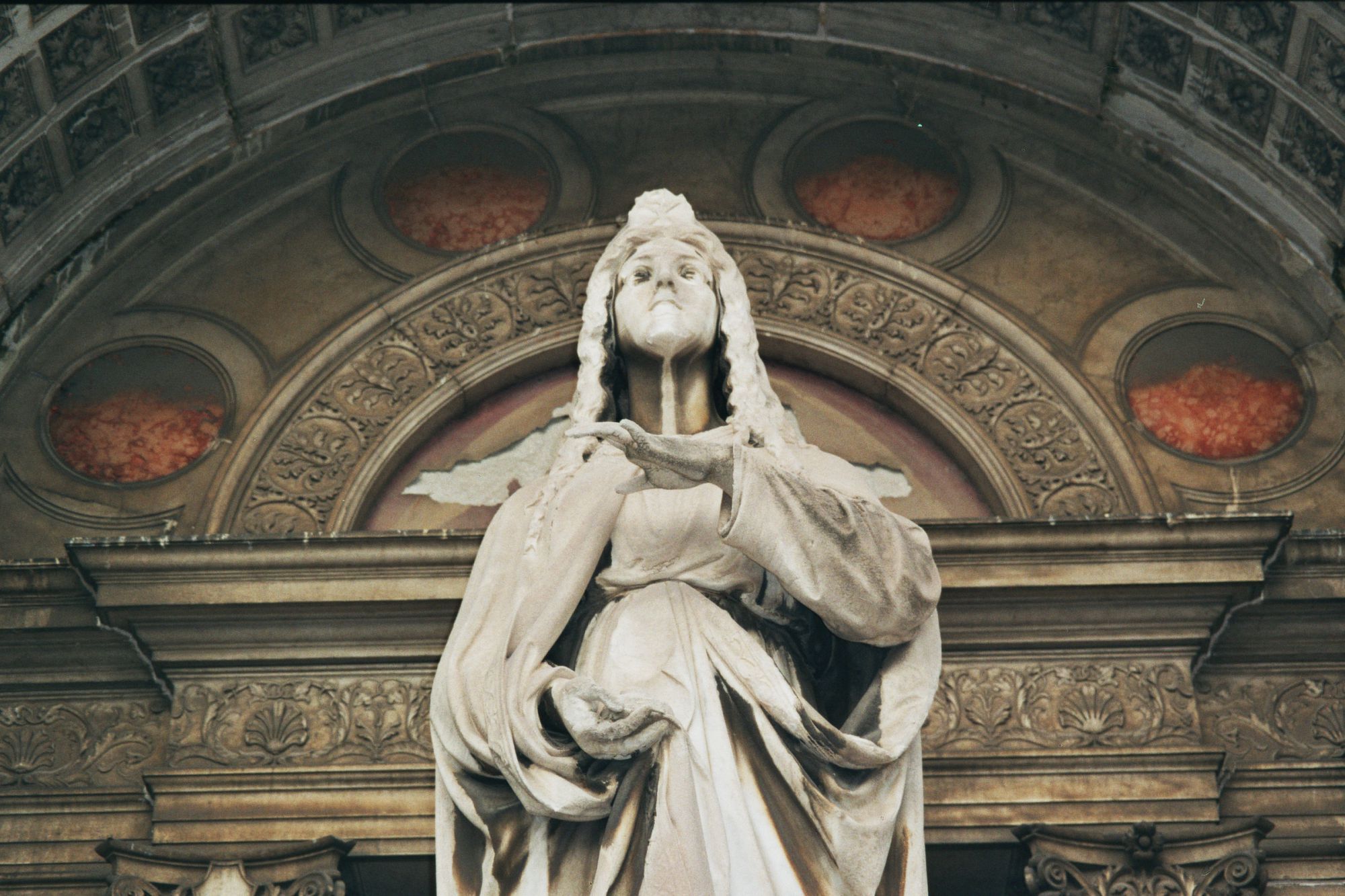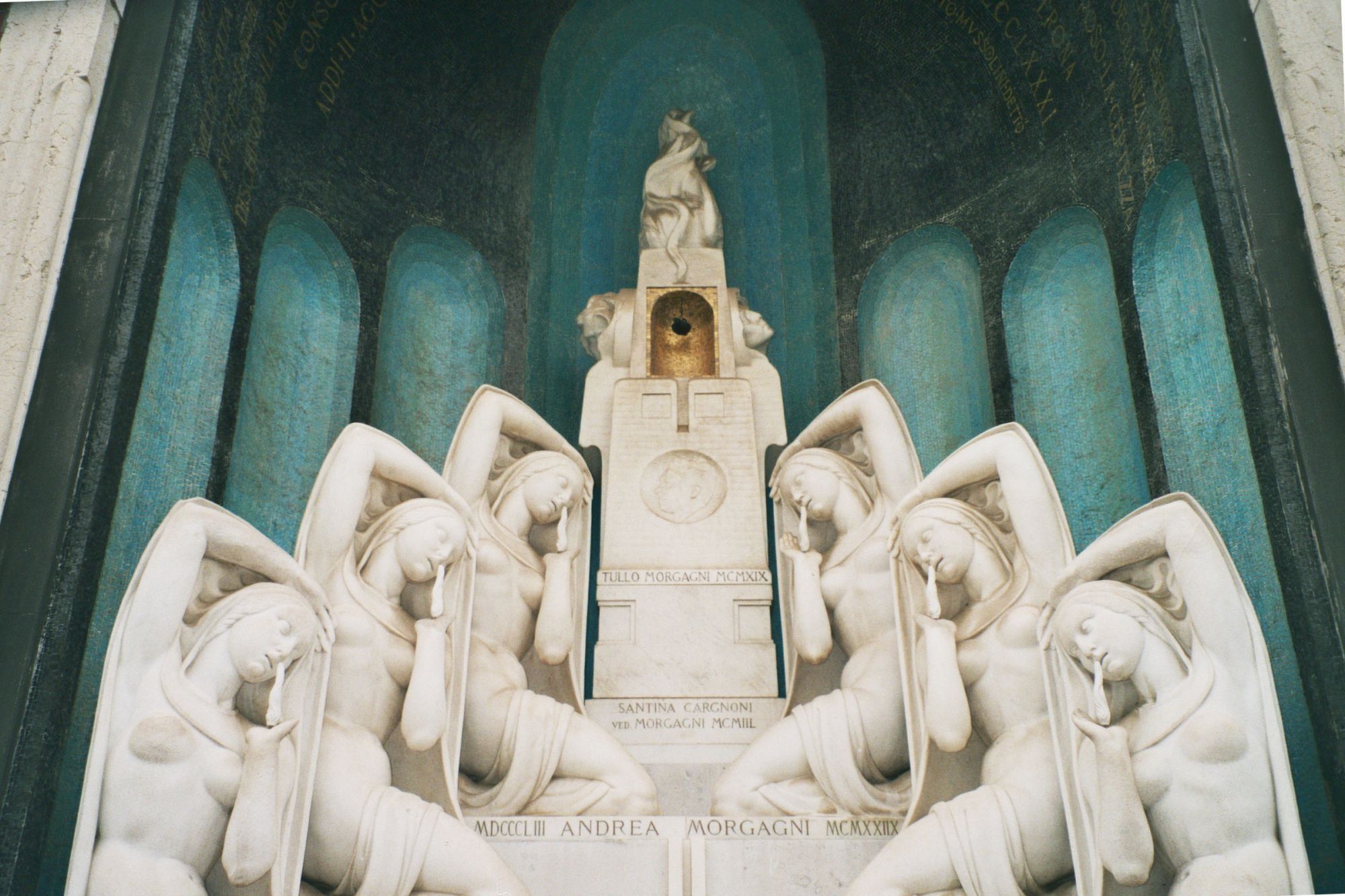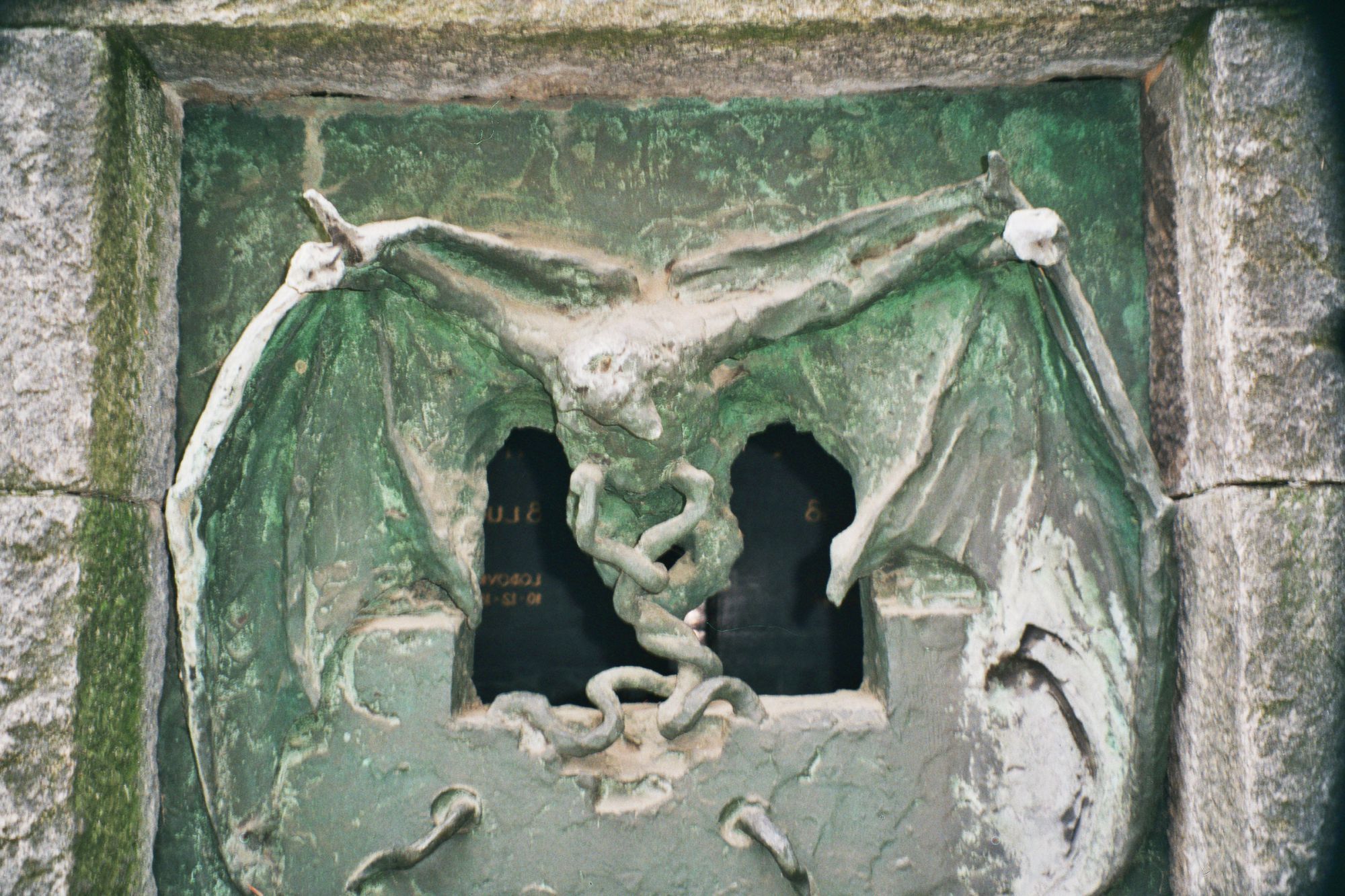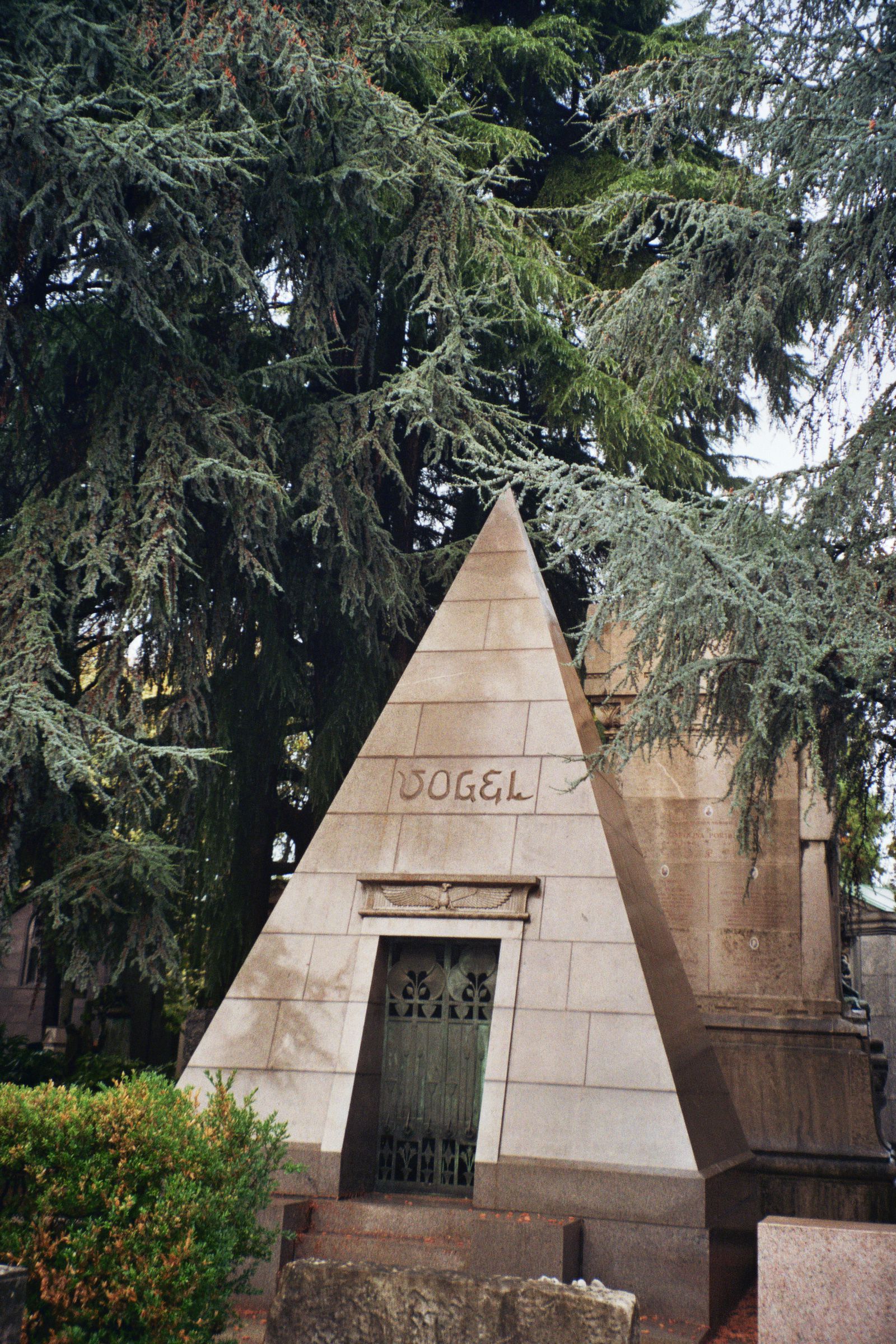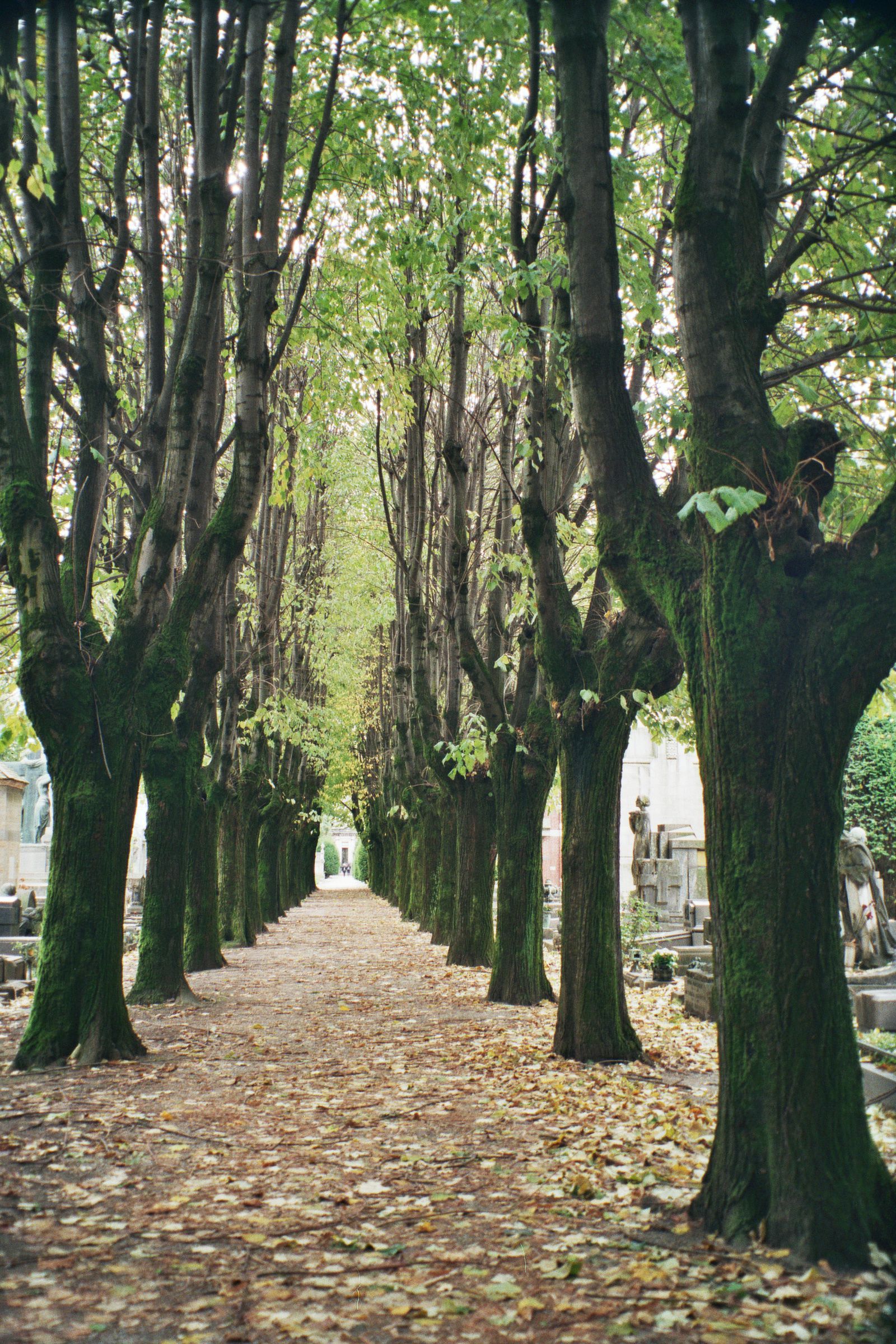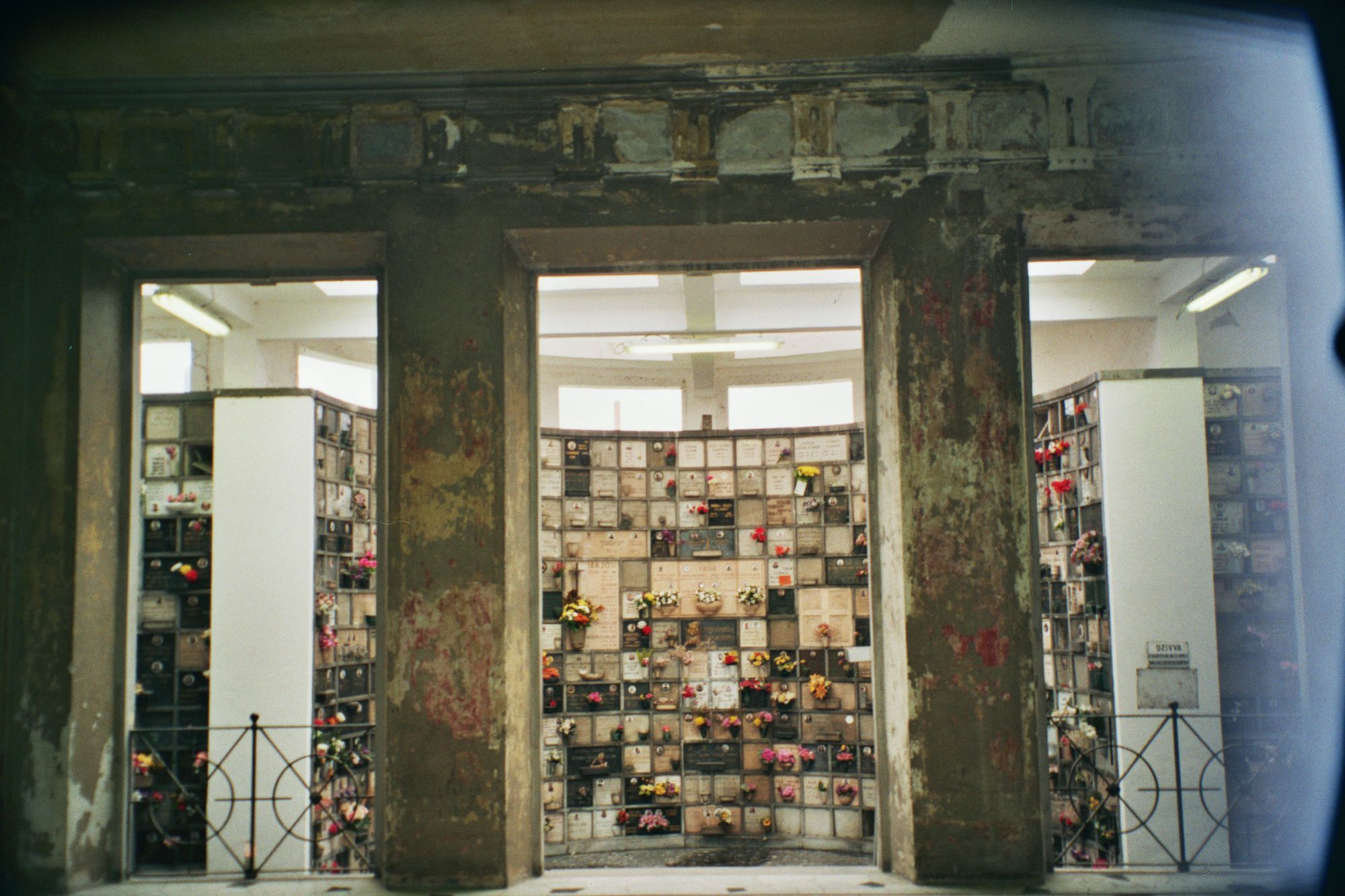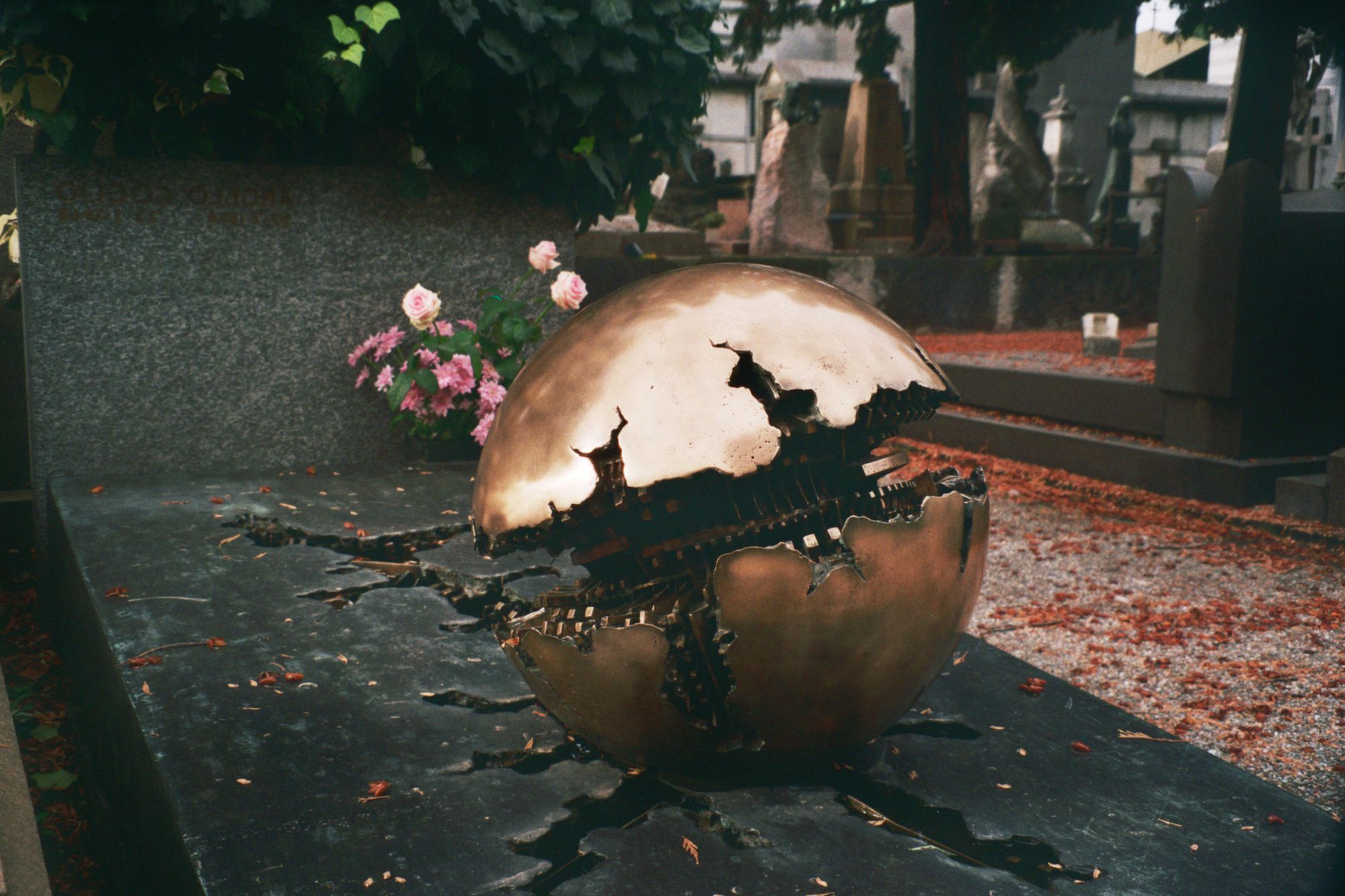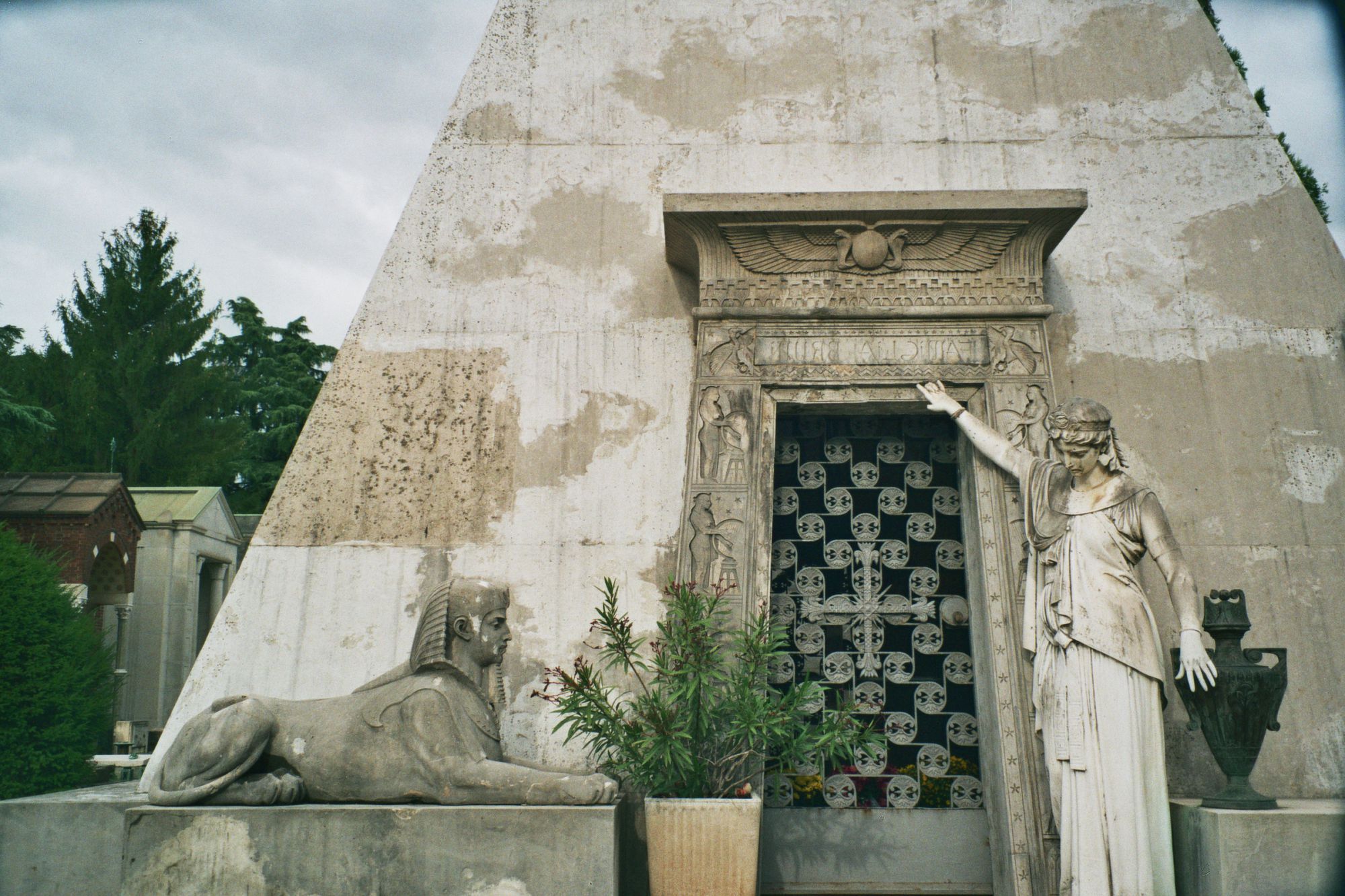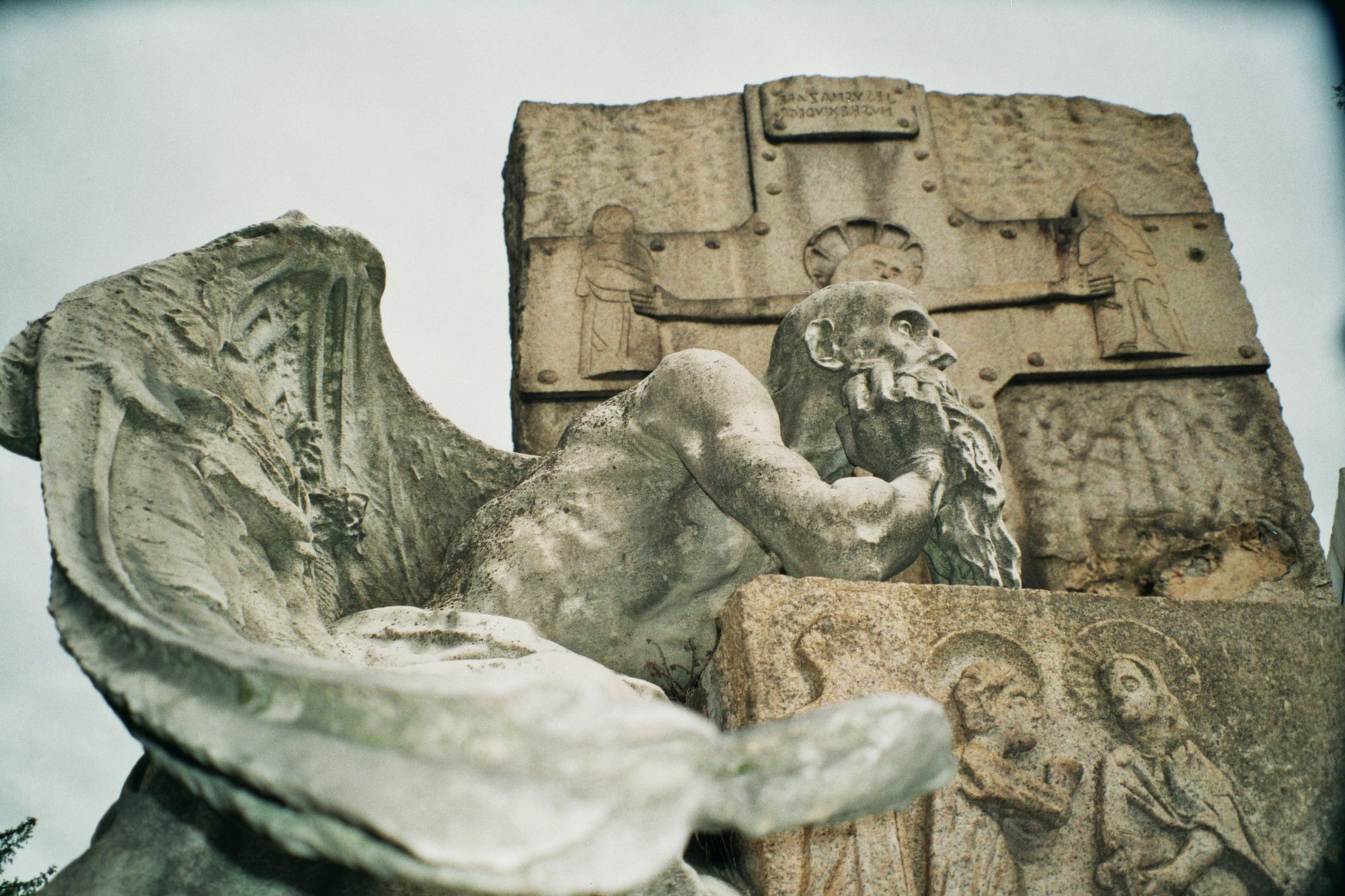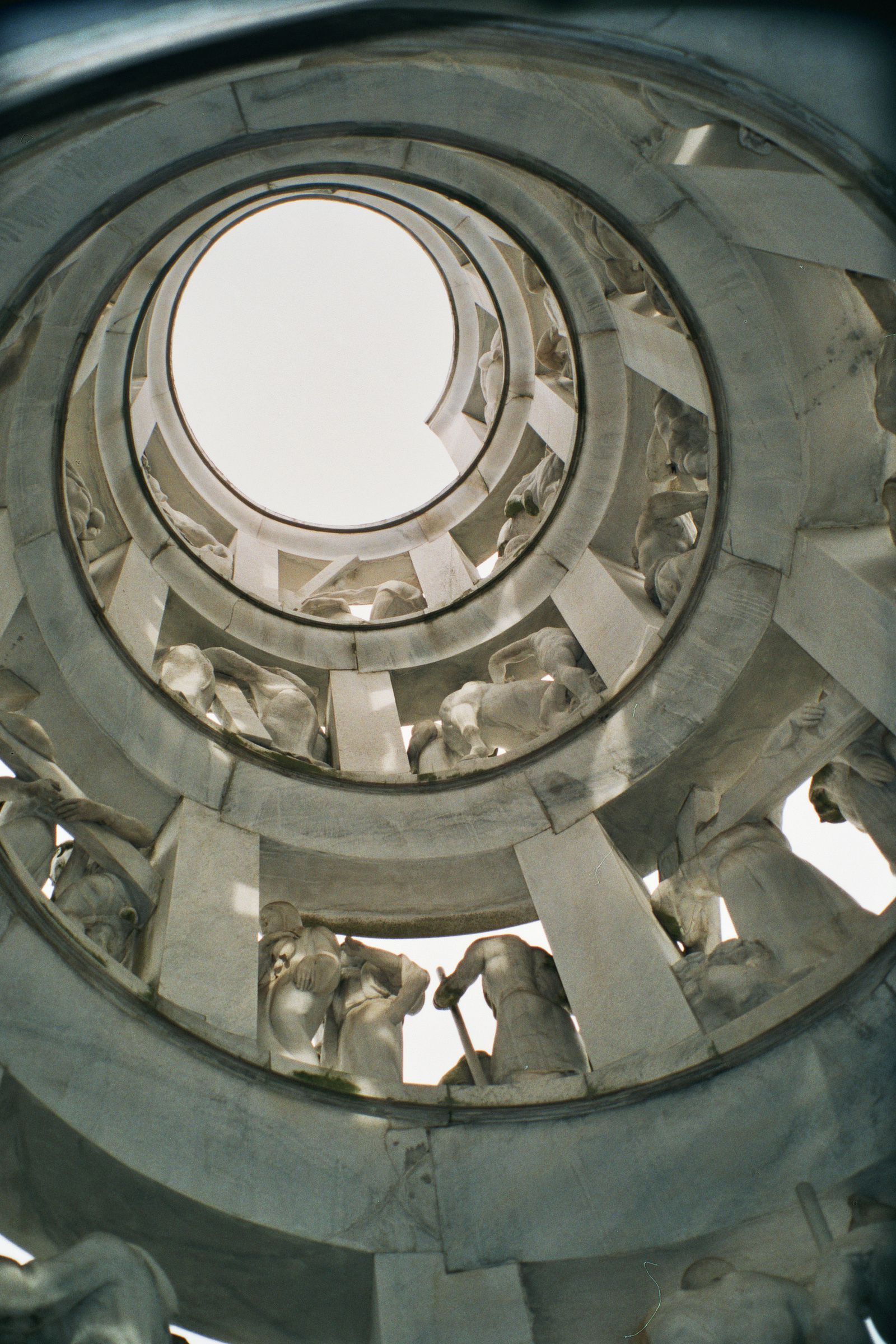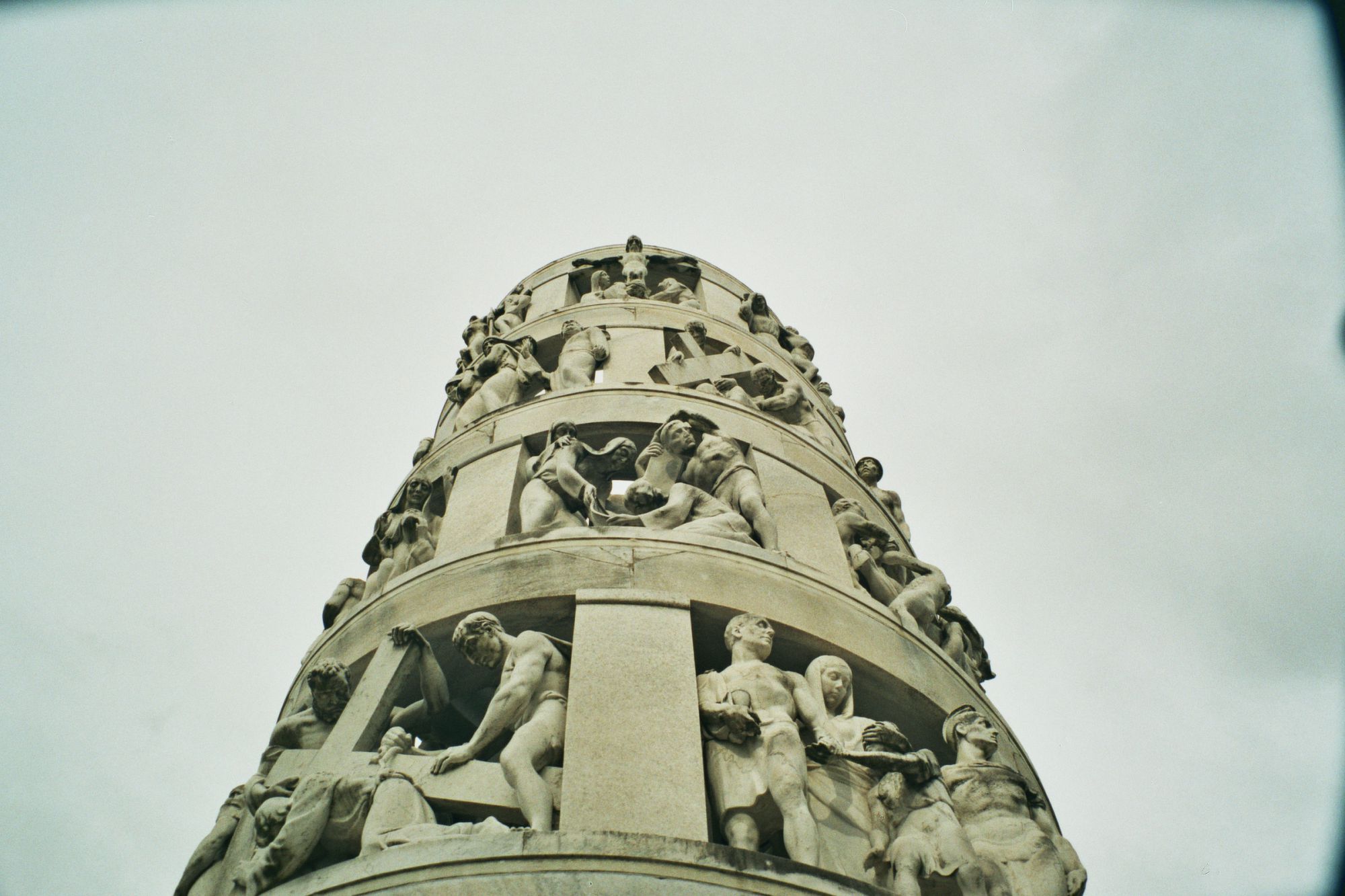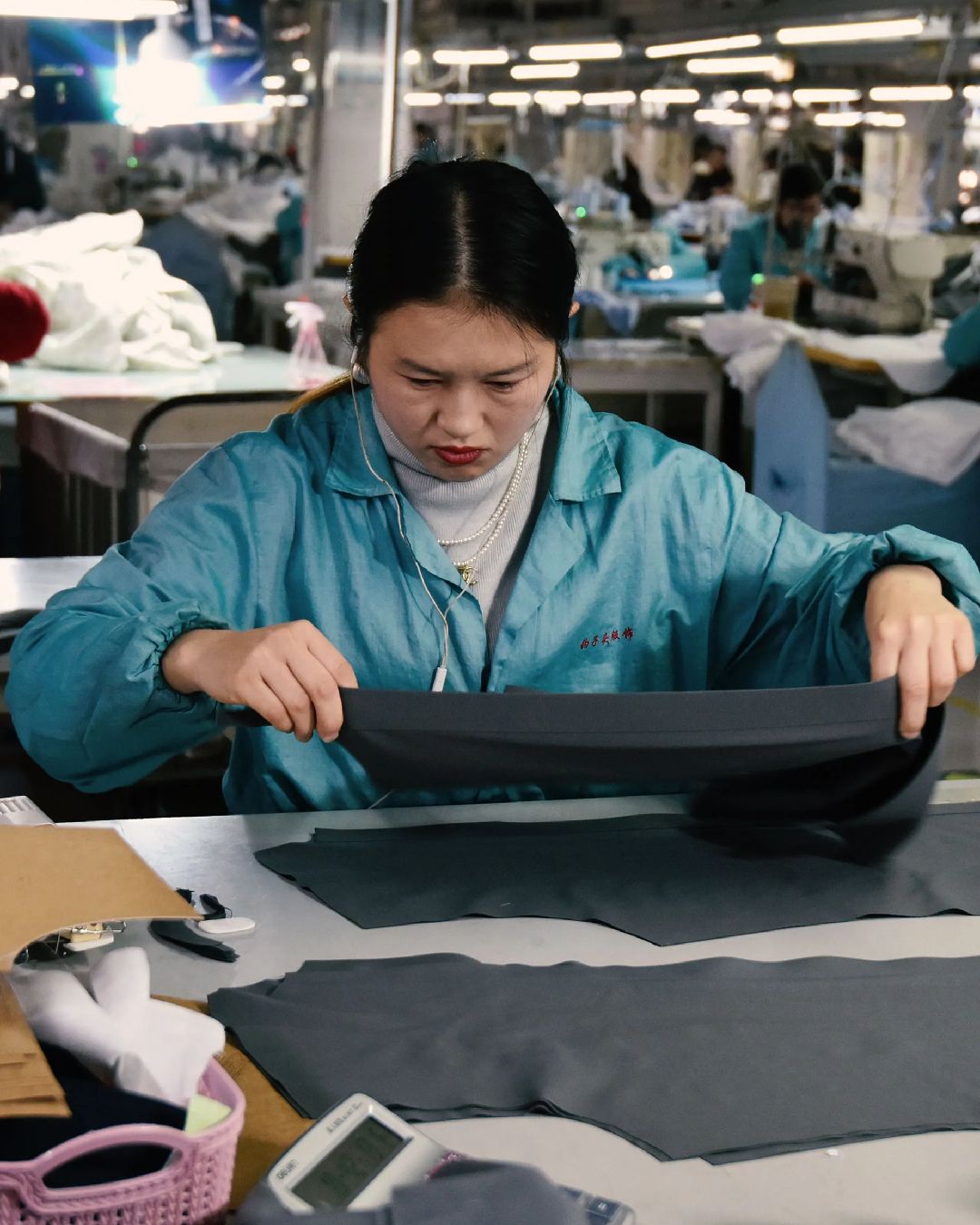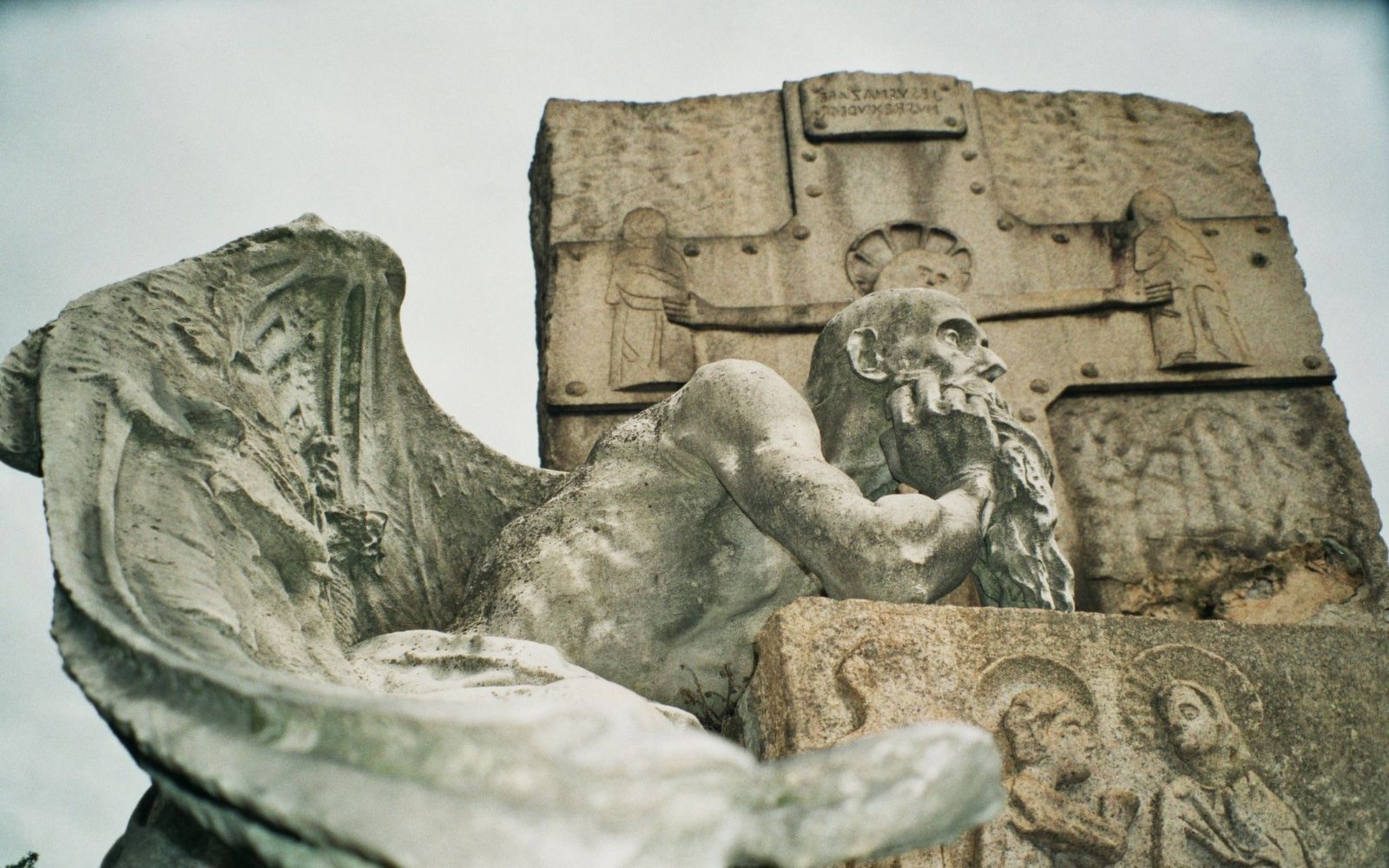
The dark fantasy of Milan's Monumental Cemetery An analogic journey trough the funeral art of Milan's largest cemetery
Wedged between Piazza Aulenti's skyscrapers, the rails of Garibaldi Garibaldi station and the tight alleys of Paolo Sarpi, there is the Monumental cemetery of Milan. "A city inside the city" dedicated to what is after life. The Monumentale, like every cemetery, welcomes the bodies and the memory of those who died, but the it has the wider ambition of being a mausoleum of the city of Milan, hosting inside it the remains of the great personalities of the city and the artistic forms. The creativity and beauty of the works in the cemetery reveals the different approaches to death, the level of the human race, and make the Monumentale one of the most beautiful cemeteries in the world.
The idea of creating a large and unique cemetery in the city of Milan came after the 1804 Saint Cloud edict, issued by Napoleon, which forbid wild burials in the cities. Napoleon’s edict actually gave life to the first legal cemeteries, prescribing that the burial places were sunny and breezy, and they had to be identical. The Monumentale construction began in 1863, with a project by the Lombard architect Carlo Maciachini who chose an area at the time outside the city walls. The initial plan consisted of 180 thousands mq, over the course of the years the cemetery got bigger, arriving to the current dimensions of 250 thousands mq, home of more than 75k souls, between the catholica area, the israelite part and a little non-catholic section.
Maciacchini opted for an eclectic style that blends byzantine, gothic and romantic references, in a heavy and austere mix that, surprisingly, works perfectly as the frame of the different – in taste and style –chapels. The main building of the cemetery is the Famedio – deriving from the latin famae aedes, “temple of the fame” – dedicated to the most distinguished personalities of Milan.
Alessandro Manzoni, Giorgio Gaber, Alda Merini, Carlo Cattaneo and Enzo Jannacci all rest in the Famedio and its crypt underneath. A name that doesn’t appear is the one of Giuseppe Verdi, who was able to elude Napoleon’s edict, and managed to get buried in the resting house designed by him (always in Milan, in Piazza Buonarroti 29).
From the Famedio the central boulevard divides the cemetery in two symmetrical parts, interspised by the charnel house and the necropolis, and concludes in front of the crematorium, the first ever built in Europe. The trees and the walls absorb the noise of the cars, the fountains and the rustle of the branches are the soundtrack of the long walks though the graves and the chapels (or the kiosks, as they are also called). Going through the tidy boulevards of the graveyard, you leaf through the golden book of Italian capitalism, from Pirelli to Campari and Falck, from Rizzoli publishers to Manusardi bankers, along with Treccani, Visconti and Branca.
The chaples – that trace back to the ‘900 cultural status symbol – were designed by well-known architects like Gio Ponti and Marcello Piacentini. The burial architectonic imagination is a triumph of creativity and symbolism: it goes from the Egypt pyramids to the tower of Antonio Bernocchi, built by Giannino Castiglioni, to the sculptural kiosk of the Bocconi family. The artworks that develop in height symbolize the ascending of the soul, while the putti and the angels cry the buried bodies.
The Monumentale hides in its maze of graves, putti and crosses, secret gems: an Arnaldo Pomodoro designed sphere, one of Lucio Fontana’s rare sculptures and a bronze one by Enrico Butti. The most interesting work of art is the bronze Last Supper created by Giannino Castiglioni scaled 1:1 for the burial of the Campari family, which the Milanese people have ironically defined “the last aperitif”. This analogic photographic series explores the atmosphere of Cimitero Monumentale, investigating the creativity and the atmosphere of the peaceful waiting.










































